How does man-on-man defense work in lacrosse. What are the key principles of effective team defense. How can goalies contribute to defensive success. What are the different slide packages used in lacrosse defense. How can teams improve their defensive communication.
Understanding the Fundamentals of Lacrosse Team Defense
Lacrosse is a fast-paced sport that requires a strong defensive strategy to succeed. While goalies serve as the last line of defense, effective team defense is crucial for minimizing the pressure on the goalkeeper and preventing scoring opportunities. In this comprehensive guide, we’ll explore the essential elements of lacrosse team defense, focusing on man-on-man strategies and slide packages.
The Importance of Team Defense in Lacrosse
Why is team defense so critical in lacrosse? A well-coordinated defensive unit can significantly reduce the number of high-quality shots on goal, making the goalie’s job more manageable. By working together, defenders can force turnovers, disrupt offensive plays, and create opportunities for counterattacks.
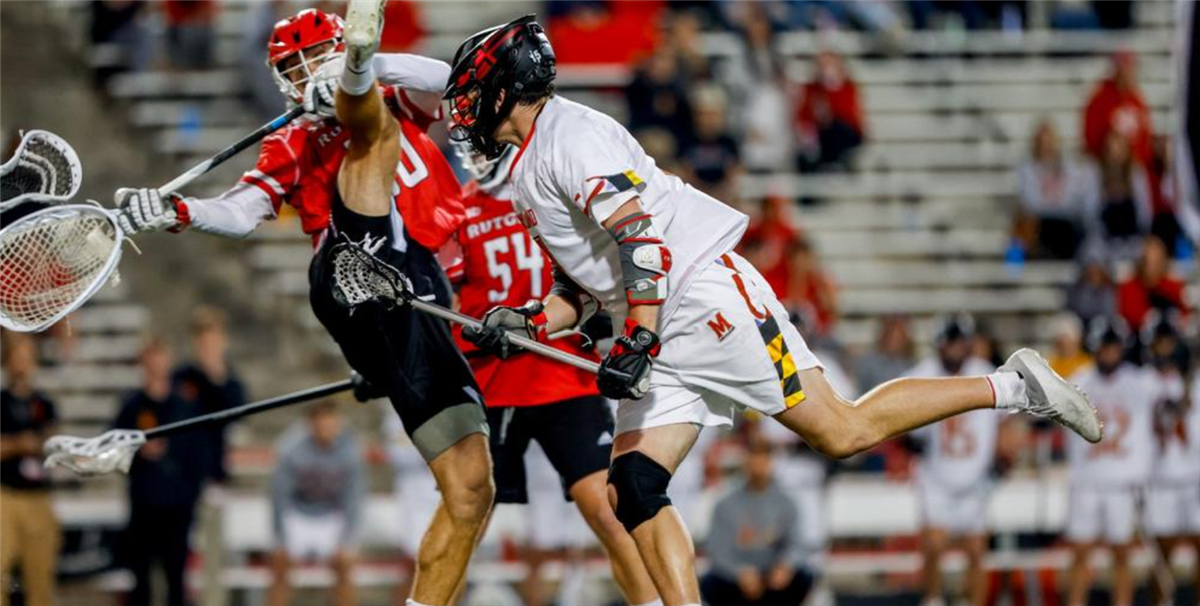
The Goalie’s Role in Team Defense
How does the goalie contribute to team defense beyond making saves? As the leader of the defense, the goalie has several crucial responsibilities:
- Understanding offensive formations and plays
- Directing defenders to optimal positions
- Communicating slide packages and defensive adjustments
- Recognizing mismatches and potential threats
By mastering these aspects, goalies can effectively quarterback the defense and elevate the team’s overall performance.
The Golden Rule of On-Ball Defense
What is the most crucial principle of on-ball defense in lacrosse? The fundamental rule is to never get beat over the top. This means defenders should position themselves to force attackers away from the center of the field and towards less dangerous areas.
Positioning for Different Dodge Locations
How should defenders position themselves based on the location of the dodge?
- Ally dodges: Force the attacker down the sideline
- Wing dodges: Direct the attacker towards the goal line extended
- Dodges from X: Force an inside roll
By consistently applying these principles, defenders can make it significantly harder for attackers to create high-percentage scoring opportunities.

Goalie Communication for Proper Defensive Positioning
What are some key phrases goalies can use to guide their defenders?
- “SHIFT LEFT” or “SHIFT RIGHT” – Instruct defenders to adjust their positioning
- “YOU’RE GOOD” – Confirm that a defender is in the correct position
Clear and consistent communication from the goalie helps maintain proper defensive alignment throughout the game.
Understanding Slide Packages in Lacrosse Defense
What are slide packages, and why are they essential in lacrosse defense? Slide packages are predetermined defensive rotations designed to provide help when an on-ball defender gets beaten. They are crucial for maintaining defensive integrity and preventing easy scoring opportunities.
The Crease Slide
When does a crease slide occur in lacrosse defense? A crease slide is initiated when the on-ball defender is in the area directly in front of the goal, typically within a circular region about the size of the crease. In this situation, the help defender comes from the crease area.
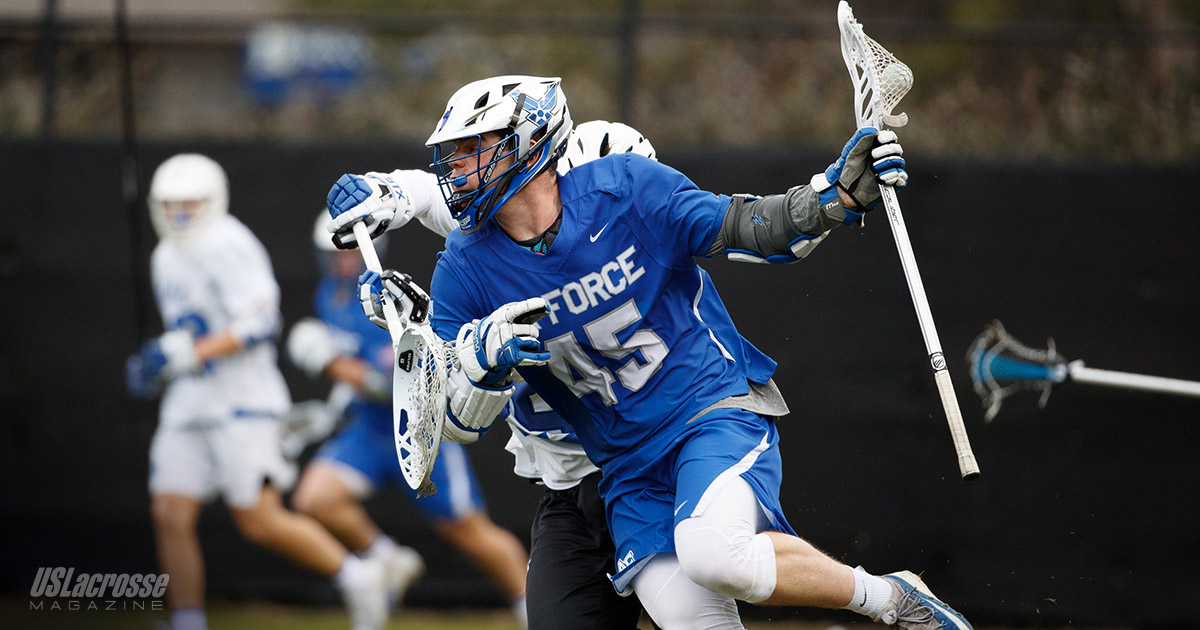
How can teams practice crease slides effectively?
- Set up cones to define the crease slide area
- Run drills that simulate various dodge scenarios
- Practice communication between defenders and the goalie
The Adjacent or Near Man Slide
When is an adjacent slide used in lacrosse defense? If there is no defender in the crease area, the slide will come from an adjacent defender. This is also known as a “Near Man” slide.
What factors should be considered when executing an adjacent slide?
- The distance between defenders
- The offensive player’s position and momentum
- The defensive matchups on the field
Adapting Slide Packages to Different Offensive Formations
How do defensive strategies change based on offensive setups? Lacrosse teams must be prepared to adjust their slide packages depending on the offensive formation they face. This flexibility is crucial for maintaining defensive effectiveness against various attacking styles.
Defending Against Wing Dodges
What are the key considerations when defending wing dodges?
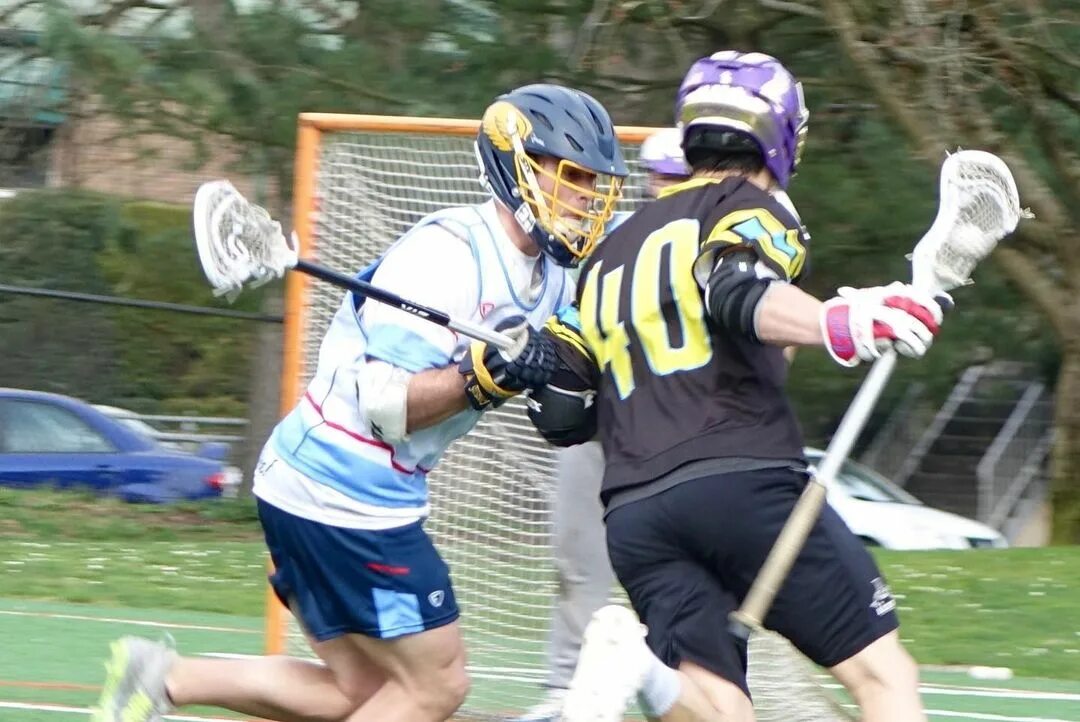
- The position of off-ball defenders
- The strength of the dodging player
- The potential for skip passes or inside feeds
Defenders must be ready to communicate and adjust their positioning quickly to respond to wing dodges effectively.
Handling Dodges from X
How should teams approach defensing dodges from behind the goal? When facing dodges from X, defenders must be particularly vigilant about preventing inside rolls and maintaining proper positioning to contest passes to cutting attackers.
The Role of Communication in Effective Team Defense
Why is communication so crucial in lacrosse team defense? Effective communication ensures that all defenders are on the same page, aware of their responsibilities, and prepared to execute the chosen defensive strategy.
Key Defensive Calls and Their Meanings
What are some essential defensive calls used in lacrosse?
- “HOT” – Indicates the primary slide defender
- “I’M FIRST” – Confirms readiness to slide
- “TWO” – Identifies the second slide
- “HELP” – Requests assistance from teammates
Consistent use of these calls helps maintain defensive organization and reduces confusion on the field.
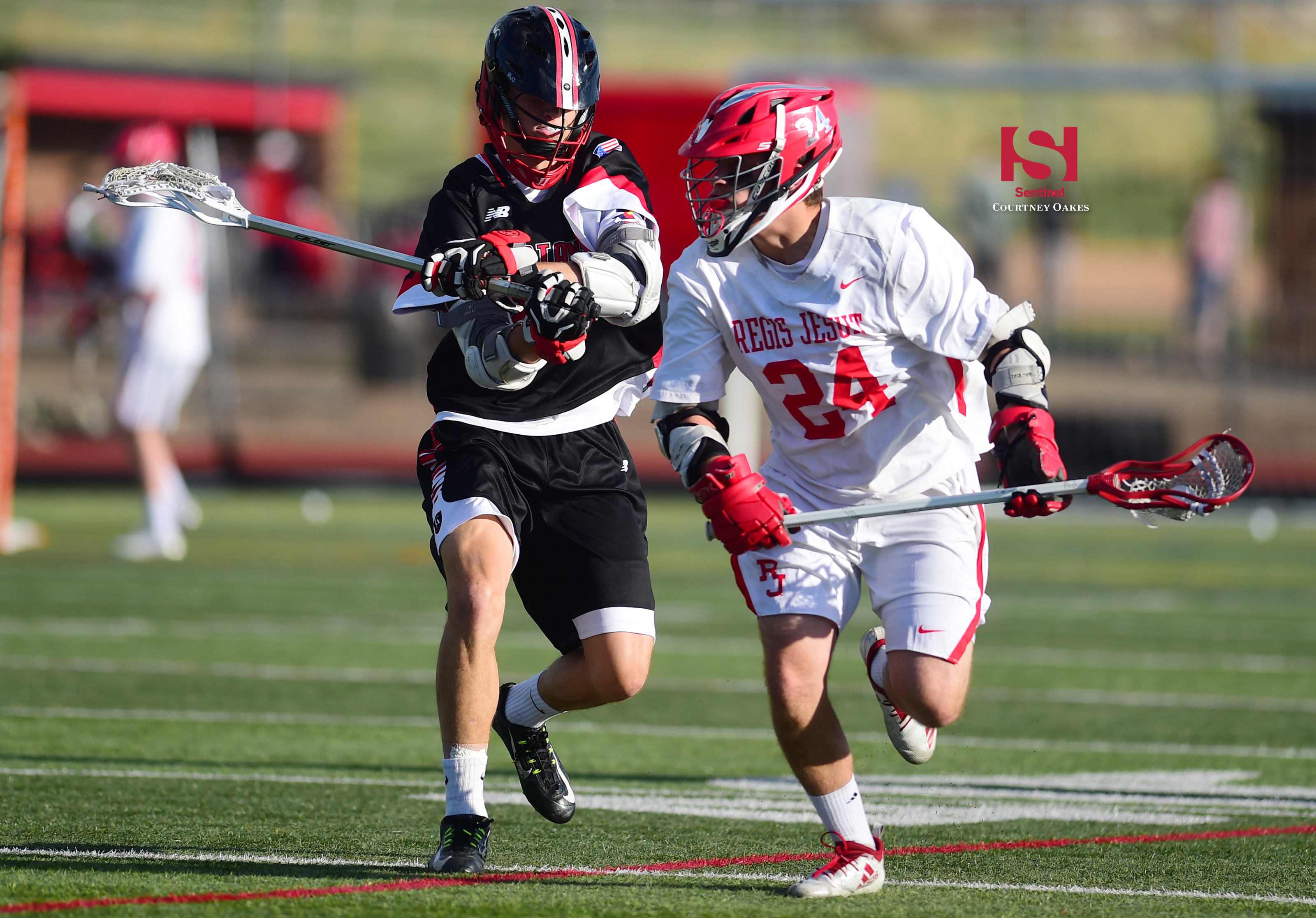
Developing a Common Defensive Language
How can teams improve their defensive communication?
- Establish a clear set of defensive terms and calls
- Practice communication drills regularly
- Encourage constant talking during scrimmages and games
- Review and refine communication strategies in film sessions
Advanced Defensive Concepts and Strategies
What advanced techniques can elevate a team’s defensive performance? As players and teams develop, they can incorporate more sophisticated defensive strategies to gain an edge over their opponents.
Defensive Rotations and Recovery
How do teams maintain defensive integrity after initial slides? Effective defensive rotations involve quick movements to cover open attackers and contest potential scoring opportunities. Players must be prepared to “fill” for teammates who slide and recover to their original assignments when possible.
Mixing Defensive Looks
Why might teams incorporate different defensive strategies within a game? Varying defensive looks can keep opponents off-balance and make it harder for offenses to find a rhythm. Teams might switch between man-to-man, zone, and hybrid defenses to adapt to game situations and exploit offensive weaknesses.
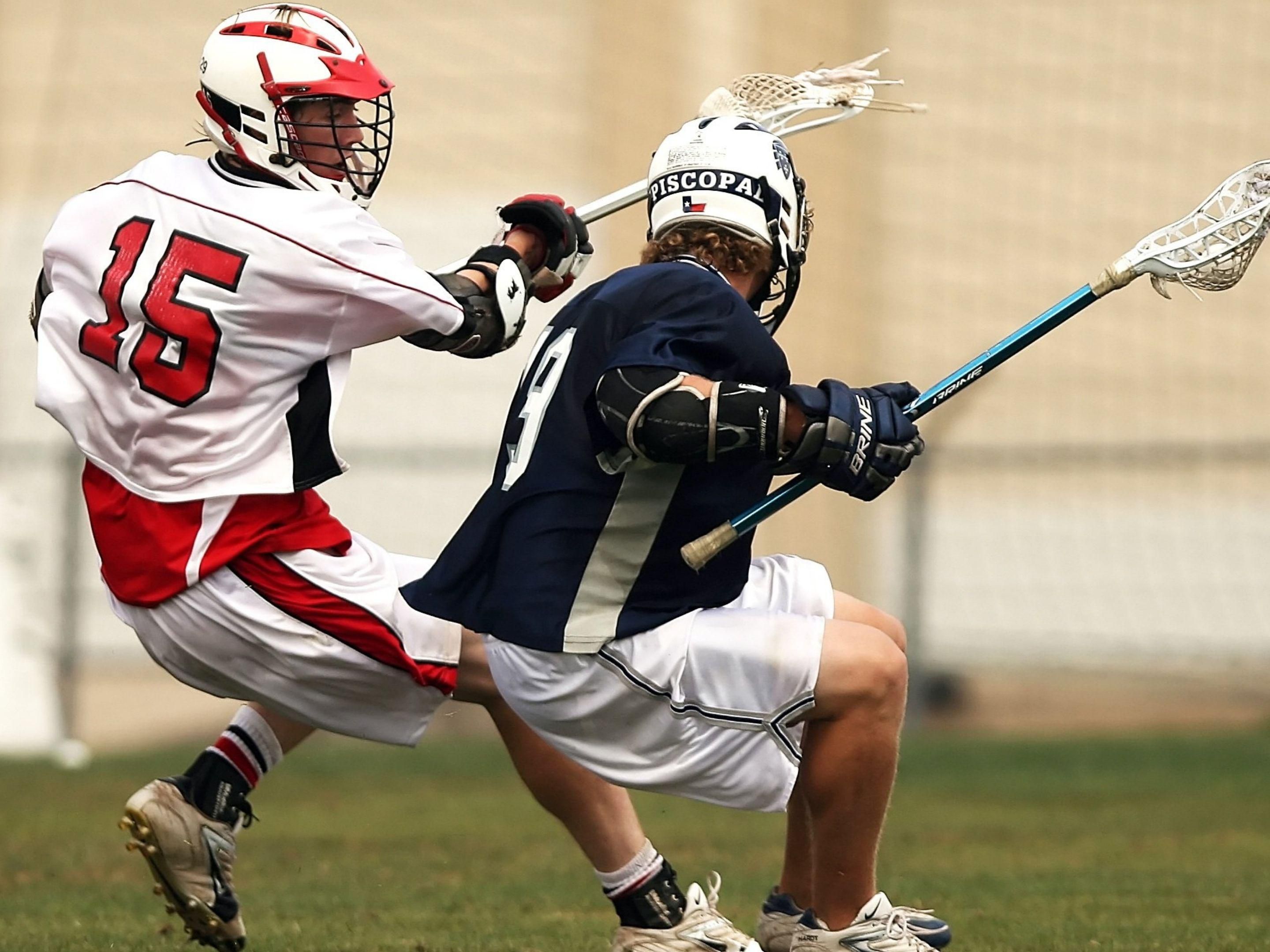
Drills and Exercises to Improve Team Defense
What are some effective drills for enhancing lacrosse team defense? Regular practice of defensive fundamentals and game-like situations is essential for developing a cohesive and effective defensive unit.
3v2 and 4v3 Drills
How do these drills benefit defensive development?
- Simulate game-like sliding scenarios
- Improve communication and decision-making
- Enhance defensive positioning and footwork
These drills challenge defenders to work together in outnumbered situations, fostering quick thinking and teamwork.
Full-Field Transition Defense
Why is practicing full-field defense important? Transition defense is a critical aspect of the game, often leading to fast-break opportunities for the offense. Full-field drills help players develop the stamina, awareness, and communication skills needed to defend effectively in these high-pressure situations.
Film Study and Analysis
How can film study improve team defense? Reviewing game footage allows teams to:
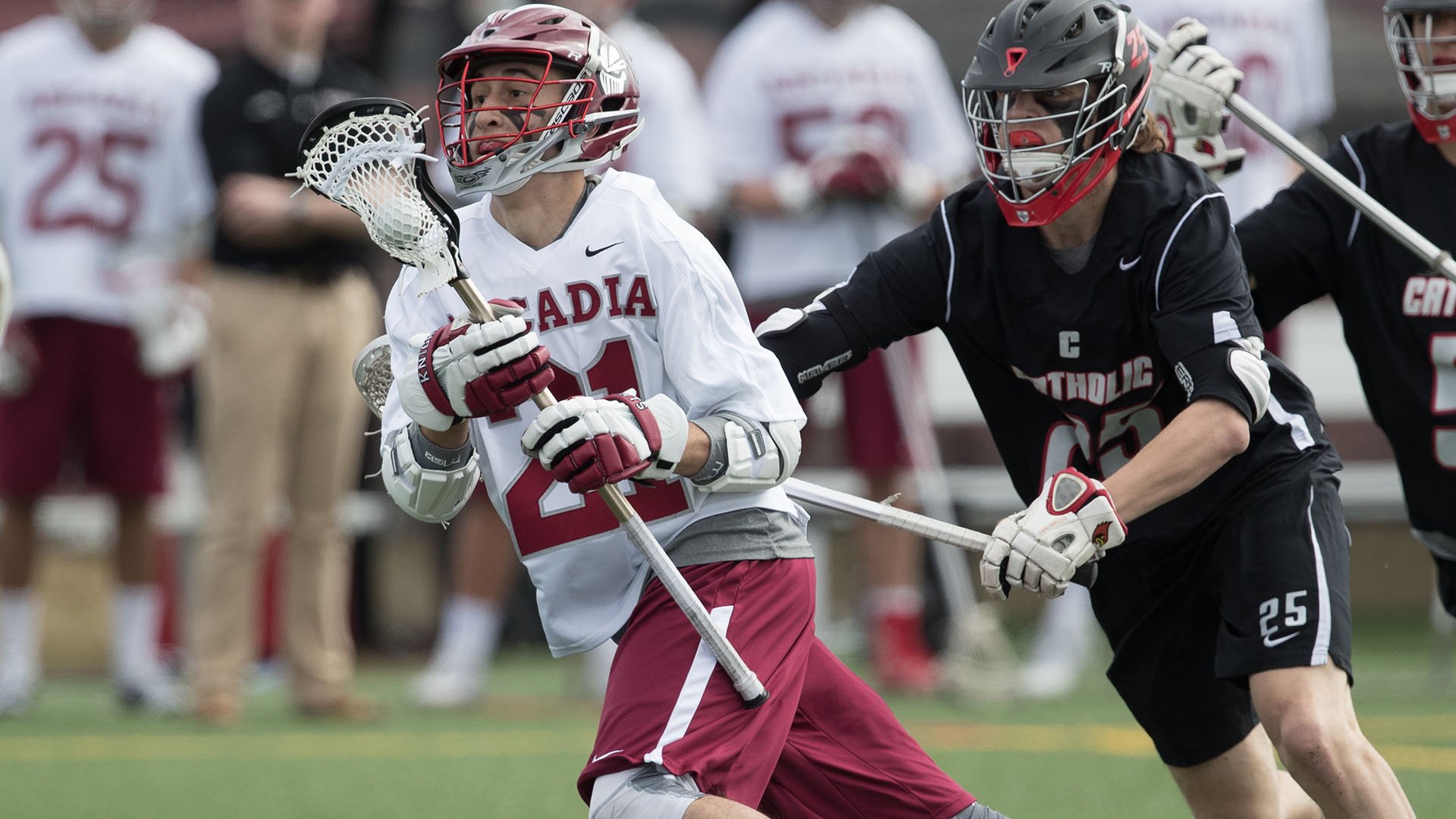
- Identify defensive breakdowns and areas for improvement
- Study opponent tendencies and offensive strategies
- Reinforce proper defensive techniques and positioning
- Develop a deeper understanding of team defensive concepts
Regular film sessions can significantly enhance a team’s defensive IQ and on-field performance.
Adapting Team Defense to Different Levels of Play
How does lacrosse team defense evolve across different age groups and skill levels? The complexity and execution of defensive strategies typically increase as players progress from youth to high school, college, and professional levels.
Youth Lacrosse Defense
What should be emphasized in youth lacrosse defense?
- Basic individual defensive skills (body positioning, footwork)
- Simple slide concepts and communication
- Fundamentals of teamwork and supporting teammates
At the youth level, focus on building a strong foundation of defensive principles that players can build upon as they advance.
High School and College Lacrosse Defense
How does defensive strategy become more sophisticated at higher levels?
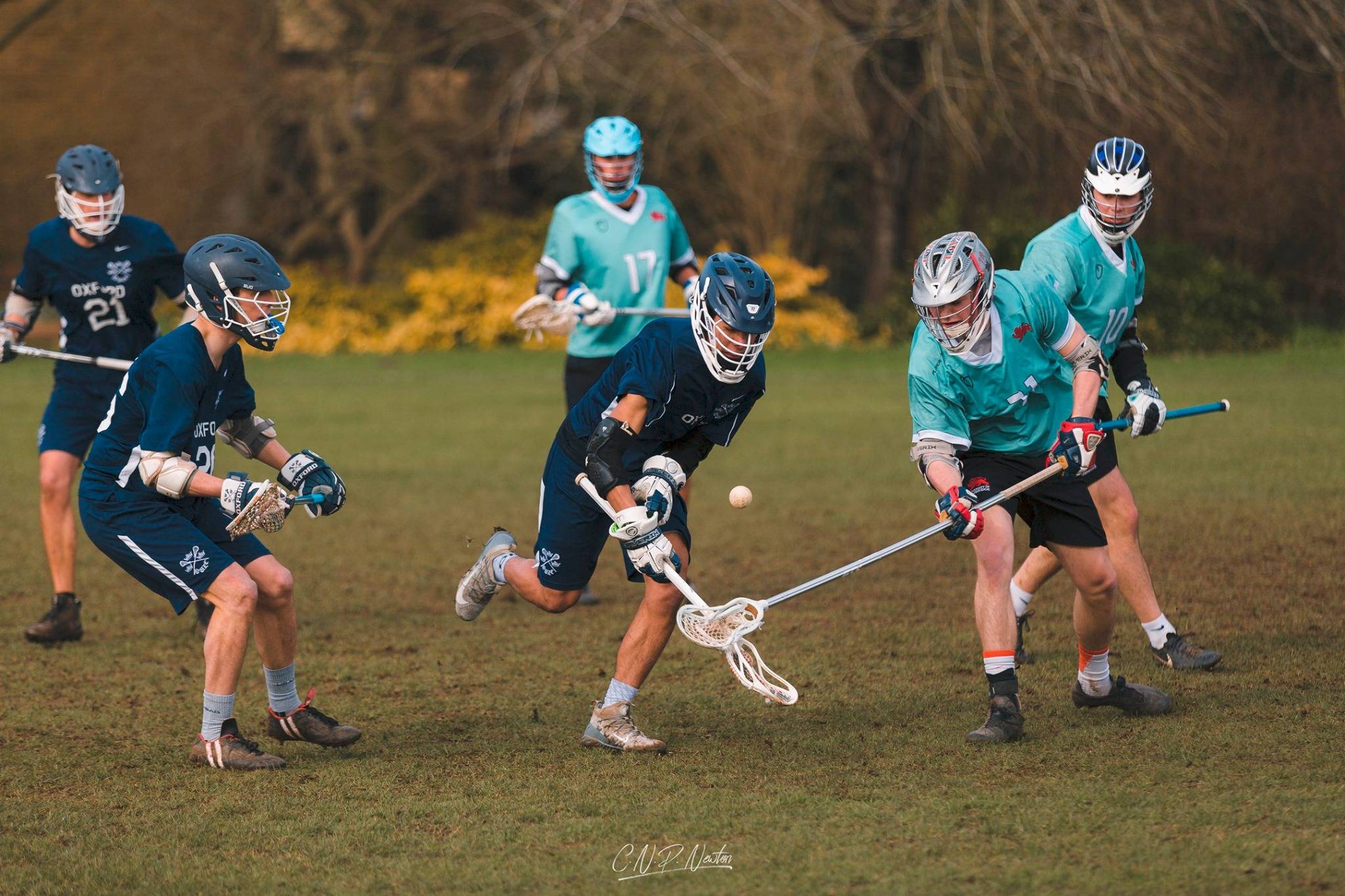
- More complex slide packages and rotations
- Advanced off-ball defensive positioning
- Greater emphasis on scouting and game planning
- Increased specialization (e.g., defensive midfielders, long-stick midfielders)
As players mature, they can handle more nuanced defensive concepts and adapt to a wider variety of offensive threats.
By mastering these fundamental and advanced aspects of lacrosse team defense, coaches and players can significantly enhance their team’s performance on the field. Remember that effective defense is built on a foundation of communication, proper positioning, and a deep understanding of defensive principles. Regular practice, film study, and a commitment to continuous improvement will help teams develop a formidable defensive unit capable of shutting down even the most potent offenses.
The Basics of Lacrosse Team Defense: Man on Man
As goalies we are the last line of defense. However defense is a team game and the stronger your lacrosse team defense operates as a unit the less the team will need to rely on the goalie making hero save after hero save.
As a leader of the defense the goalie has the responsibly to always understand what the opposing offense is doing and how the defense needs to react given the offensive set, position of the ball, and all the other factors going on in the game.
In a sense, goalies need to know where every defenseman should be and when. You can’t be the quarterback of the defense without knowing the plays.
Understanding team defense is also going to help aid in goalie communication and general team defense communication as you’ll always know what each defender should be doing in every moment.
I’ve already written a guide for goalies on how their defenders should play individual defense.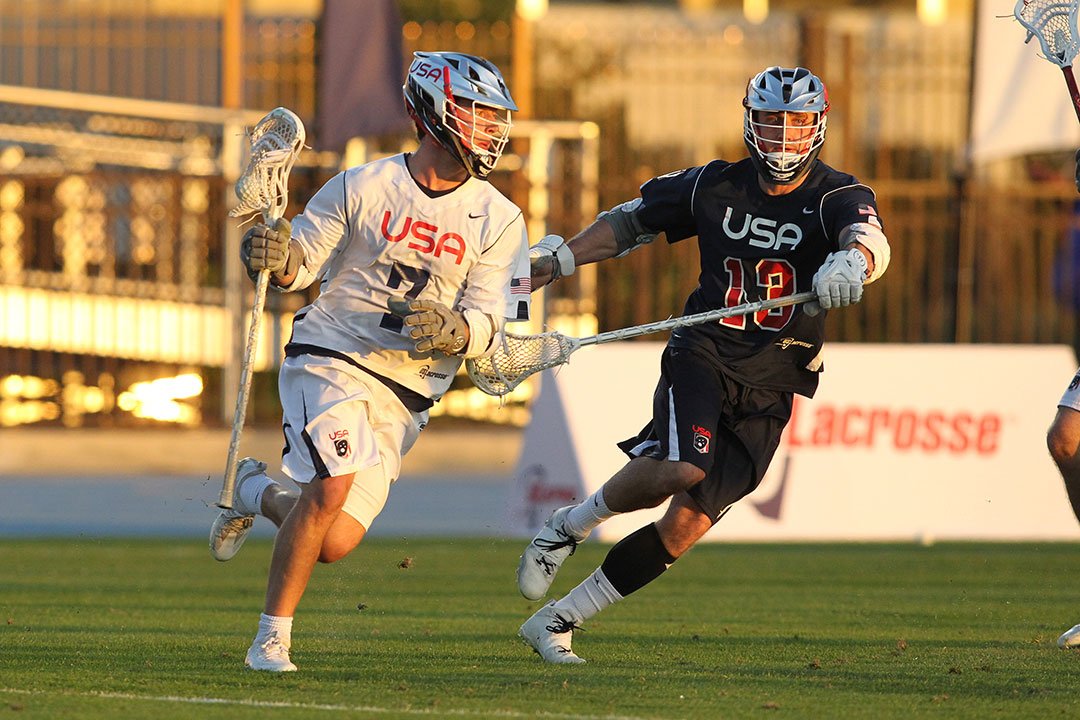 That is going to cover individual 1×1 play on the ball.
That is going to cover individual 1×1 play on the ball.
Today’s post is everything a lacrosse goalie needs to know about how to play team defense. This guide covers a basic man-to-man, slide and recover defense. This does not cover zone defense which I can cover in another post if you’re interested.
First rule of lacrosse team defense: Do not get beat over the top when playing on-ball defense.
The slide packages that I’m going to describe in a little bit are all based on this one premise: that the on-ball defender does not get beat over the top.
Defenders should cheat and position themselves such that they never get beat top side.
D-men should also position their sticks top side to persuade the attackman or middie to dodge where they want them to.
Here’s what that looks like for dodges from different points on the field.
We never want to get beat top side:
- For ally dodges, this means forcing the attack man down the side of the field, not towards the center.

- For wing dodges, this means forcing the attack man towards goal line extended.
- For dodges from X, this means you force an inside roll.
As a goalie you’ll have a better view of whether a defender is setup in the right position on the field to force his attackman down the side and avoid getting beat over the top.
If you notice a defender is out of position, speak up! Or if he’s in fine position, speak up! Either way, speak up.
- SHIFT LEFT or SHIFT RIGHT – Will let defenseman know he needs to move his position left or right.
- YOU’RE GOOD – Will let defenseman know his positioning is perfect.
And as you’re going through practice and drills with your team always remind defenders – thou shalt not get beat top side.
Guarding an attackman or middie 1×1 in the sport of lacrosse is a hard task. So we’re going to assume that defenders will get beat and will need help. That’s a basic principle of lacrosse team defense.
This help comes in the form of a slide.
If a defender is in the crease area, the primary slide will come from the crease, appropriately called a “Crease Slide”.
You’ll want to imagine a circular area directly in front of the goal (dark green in image below) that is also the size of the crease. If a defender is in this area covering an attackman, the slide will come from the crease.
In practice you can setup cones to simulate this area and help the defense get accustomed to it.
Same idea applies to wing dodges and dodges from X. If a defender is in the dark green area, the slide comes from the crease.
As a goalie, it is your responsibility to recognize where the slide should be coming from and ensure the responsible defender is aware he is the slide.
The goalie will also want to understand the matchup to determine when to send the slide. If its a strong attackman vs. a rookie defender, the slides comes earlier. And the slide can wait just a second longer if its a All-Star defenseman on a rookie attackman.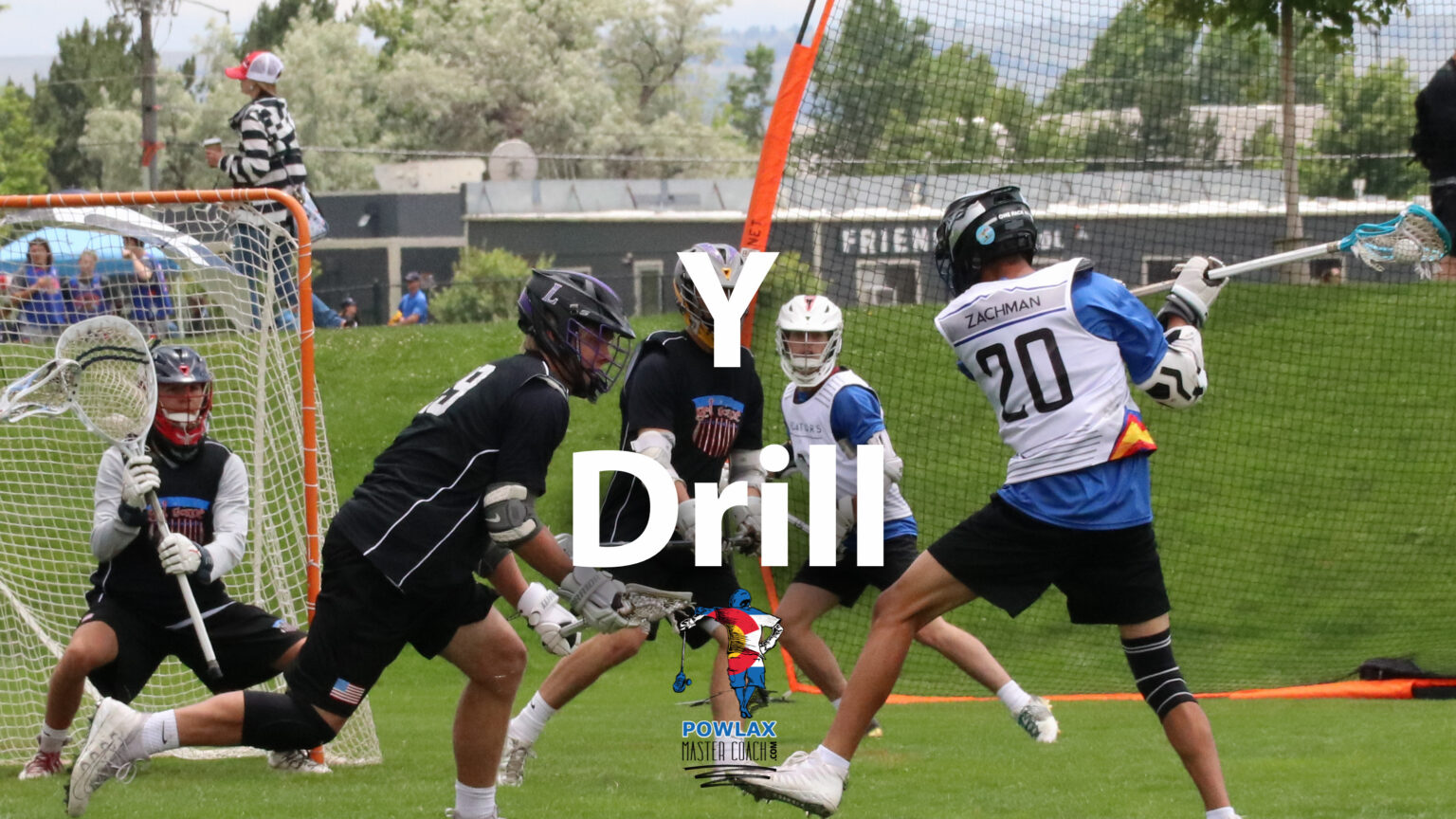
If there is no defender in that designated area, sending a slide from the crease is too difficult as the defender doing the slide will have to travel a long distance to arrive at the right spot before a shot is taken.
In this case, the defense will use another strategy.
So what if there is no crease defender? How does this effect our slide package?
In the absence of a crease defender, the slide will come from an adjacent defender, also called an “Adjacent” or “Near Man” slide.
It is the defense’s responsibility, and especially the goalie’s, to understand what slide package the team will use. That package should be clearly and loudly called out so that every defender knows his role.
In the case of a wing dodge, the defense has a few options depending on where defenders are setup when guarding their assigned attackman.
Again, this is why defensive communication is so important. The team must be communicating as to who will be the slide.
During an offensive set, a defender could start out as the primary slide but then be moved out of position when his attackman moves to another spot on the field.
He should yell – “I’m off”. The teammate with the new responsibility should yell “I’ve got the go” (or whatever defensive terminology your team uses).
This way the defense communicates immediately as who then is the primary and secondary slides.
In the image below, the slide could come from a player below the crease (righthand side) or above the crease (lefthand side).
In the case of a dodge from X the near man typically comes in the from of a coma slide where the defender sprints in front of the goal to stop the attackman and provide help.
Notice that the defender who is responsible for the coma slide must cheat off of his assigned man to be properly positioned to arrive on time.
Cheating in this way is perfectly fine because as the ball carrier starts to drive that attackman isn’t really a threat. If the driving attackman stops and moves back towards X the primary slide can recover and get closer to the player he’s guarding.
If the driving attackman stops and moves back towards X the primary slide can recover and get closer to the player he’s guarding.
So far we’ve covered the primary or 1st slide. Another important element of team defense is the “second slide” or the 2.
The primary slide will leave an open attackman and thus we need another slide to pickup this open man or fill the open space. This is called the 2nd slide.
In all the images above I’ve only shown the primary slide. Now let me add a few more players to demonstrate what a 2nd slide should look like.
Here the offense is in a basic 1-3-2 set. D1 is the primary slide and D2 is the second slide.
D2 will cheat off of his assigned man to be in good position to help guard the crease attackman when the slide occurs. This is known as “splitting two”.
When splitting two you’ll keep your head on a swivel and/or use peripheral vision to see both the man you’re responsible for guarding and the man that the primary slide is responsible for.
The dimensions of this picture are off a little but this should give you a general idea of how the second slide fills the space left by the primary slide.
It’s really important that all defenders especially the 2 slide keep their sticks in the passing lanes to intercept or deflect any potential through passes.
As a goalie you want to not only ensure the team knows who is the primary slide, but also knows who is the 2nd slide?
Who’s the 2?
That way when its time to initiate the slide the team is moving as a fluid unit.
For those defenders not involved in the primary or secondary slides and not guarding an attackman adjacent to the ball, they’ll want cheat off of their man towards the crease to help protect the open space left from sliding teammates.
Regardless of where the slide comes from, defenders need to slide the right way.
How many times have you seen an attackman simply blow by a sliding defender and score 1×1 with the goalie? When a defender initiates a slide, he needs to do it using the proper technique.
That proper technique consists of these 5 rules:
Slide to where he’s going, not where he’s been
Defenders should anticipate the path of the driving attackman and slide to where he’s going to cut off his path and engage the ball carrier.
So always slide to where the offensive player is going, not where he’s been.
Breakdown on arrival
When a sliding defender arrives at the ball carrier he needs to “break down” to be ready to play solid defense.
Breaking down means getting into a solid defensive stance that’s taught in 1×1 lacrosse defense — knees bent, back straight, balls of feet.
This technique takes a lot of practice as its very difficult to go from a sprint to this defensive position but its what all elite defenders know how to do.
Stay In Front of the Attacker
Remember that if the on-ball defender is playing defense the right way, he’ll be forcing the ball carrier down the side of the field.
So as a slider its important to consider this as you take your angle of attack.
If you stay in front of the ball carrier, you can often get a double team and a takeaway before the original on-ball defender must peel away and recover.
Slide Man Stays on the Ball
Once a defender initiates the slide, he must go.
And once he goes, he is now responsible for guarding the attackman with the ball.
The original on-ball defender will peel back to the crease and pickup an open offensive player.
Original On-Ball Defender Retreats to the Crease to pickup Open man
If the ball carrier peels away from the slide or passes the ball, the original on-ball defender should retreat back to the crease to pickup the open man.
This is where communication is going to help the defense as his teammates should be helping him find the open man.
Remember as I mentioned above the primary slide stays on the ball carrier. If the opportunity presents itself the original on-ball defender can stay engaged and attempt to double team the ball carrier.
If the opportunity presents itself the original on-ball defender can stay engaged and attempt to double team the ball carrier.
However if this isn’t possible because the attacker peels back or passes the ball to a teammate, the original on-ball defender recovers back to the crease, picks up the open man and the team is right back in the same defensive strategy.
Lead with the stick, follow with the body
In the event that the slide comes very close to the goal, i.e. the coma slide, the defender will want to immediately body check the ball carrier as opposed to breaking down.
When you slide with intent to body check, always lead with your stick. Long poles can reach the ball carrier 6 feet away so use this to your advantage.
After leading with the stick, you’ll follow through with your body lowering the shoulder to make contact.
It’s important to keep your head up and see what you are hitting. This will avoid injury and penalties.
Here’s the guide from US Lacrosse on body checking:
There are of course many different strategies for playing team defense in lacrosse. However the 1×1, slide and recover strategy I outline in this guide is by far the most common.
This is the defensive system that I teach with my youth teams and the one most college teams run today.
If you play summer league where you’ve never played with any of the players, by learning this defense you’ll have a base that everyone can default to and understand.
When executed properly it makes the shots that us goalies have to face a lot easier to save. Also by understanding how to play lacrosse team defense the goalie can feel much more confident and be the leader that lax goalies are supposed to be.
Until next time! Coach Damon
Any questions on how to play lacrosse team defense? Let me know in the comments.
Disciplined Defense – LAXPlaybook
This article really stems from my recent interview with a great young Coach, Jake Coons, and Head Coach at RIT. He really made me re-think how we coach defense lacrosse drills in lacrosse practice. I want to hit on his key points of how many of us as coaches focus on team defense, or slides, or transition defense but perhaps not as much on individual defensive skills. Especially in the critical areas of coaching Checks vs. Position, Recovery, Angles, and coaching how to react to picks even with ‘match-ups’ in mind.
Checks
I cringe when I am refereeing games with young players all the way up through good high school varsity teams and I hear coaches screaming ‘poke check!!’ OK, here you go, the facts are: that very few if any great lacrosse coaches are coaching checks on a regular basis anymore. The simple truth is that with a big step on a check, the defensive player is out of position, and more importantly, even with hard contact on the check, the ball does not come out.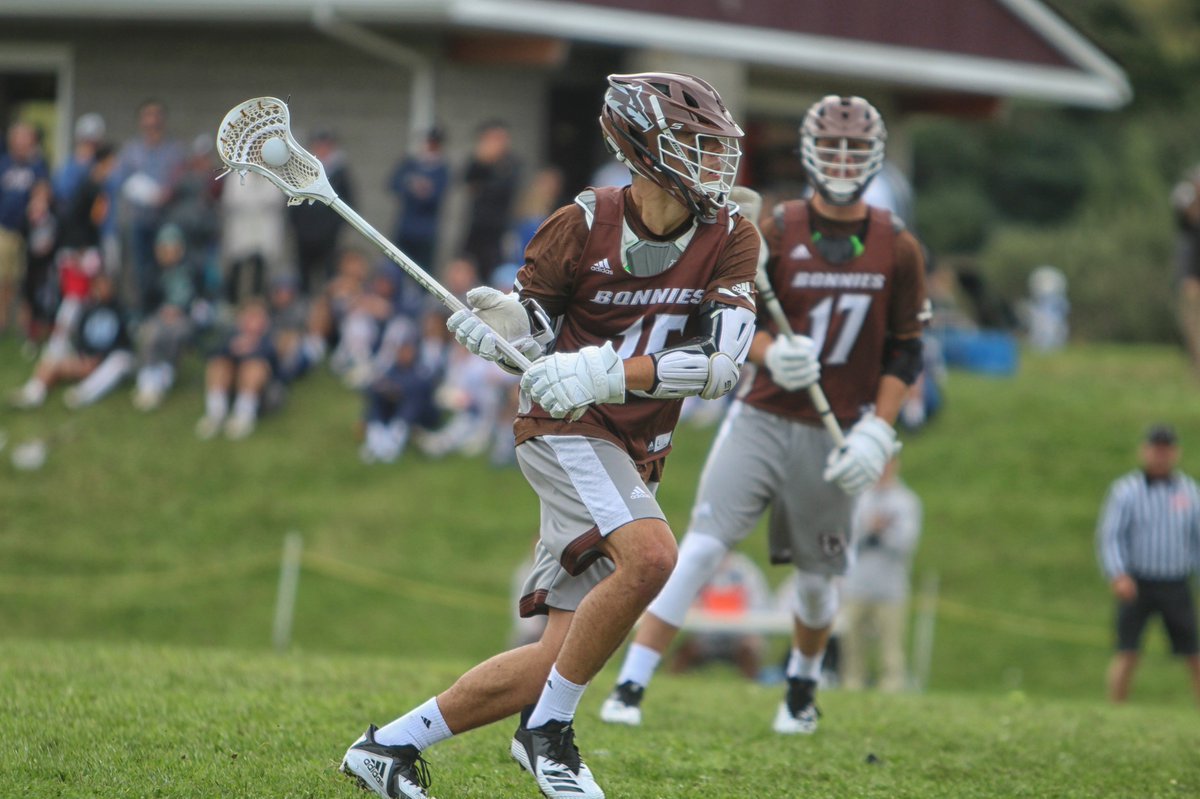 We first discussed this with Coach Bill Tierney and his comment that “The best check, — might be a no check.” Coach Shriver at Boys Latin suggested to us that “Even a good check goes unrewarded.”
We first discussed this with Coach Bill Tierney and his comment that “The best check, — might be a no check.” Coach Shriver at Boys Latin suggested to us that “Even a good check goes unrewarded.”
Position, angles, the attack position for defenders are so much more important. The goal is to keep them from scoring, not to take away the ball, when it usually does not come out of the stick anyway. “Don’t get Beat,” is so much better than “Take it Away.” More and more coaches focus on position, pushing, and a small lift on the bottom hand when the offensive player goes to shoot or pass.
I loved Coach Coon’s philosophy and coaching points, “Back Pedal, Drop Step then Squeeze…” And get physical in the ‘War Zone’ his description of a parallel line from GLE to the top of the crease, going across the offensive zone in tight to the cage.
Slides and Recovery
I know at least for me we spend a lot of time in practice on transition drills in practice. It is a fun way to practice, fast paced, and helps to intuitively teach players to slide. What I am learning from all the great coaches we interview is that the majority of the focus needs to shift from the actual slide itself to the slide and recovery. In the words of Coach Coon, calling slides is easy, recovery is critical.
What I am learning from all the great coaches we interview is that the majority of the focus needs to shift from the actual slide itself to the slide and recovery. In the words of Coach Coon, calling slides is easy, recovery is critical.
We have a couple of great drills to reinforce this, check out the Garber 1-2-3 Drill in the article section, or run more 3V2 in practice to teach the fundamentals. In drills that are 3V2 there is no confusion for the players, we either are sliding to the ball, or recovering to the hole, when the player we were covering then passes the ball. The focus here is effort, the recovery is critical, footwork, open to the inside and get your stick in the passing lane.
Angles and Position
If we want to begin to really reinforce positioning as a defensive fundamental, then we need to talk first about attack position. Many of our players want to slide hard, and then either lunge at the ball, or try and run over somebody. Coach a balance, and keeping the pole out front for the cushion position after we have slide hard for five yards is the key./cdn.vox-cdn.com/uploads/chorus_image/image/60794897/LXM18_PENN_037_.0.jpg) For drills, running skeleton (no offense) slide drills concentrating on a 1) hard slide, 2) balanced strong attack position upon arrival, and 3) quick recovery on and off ball will help build these skills. These can be found in our articles or samples from Coach Daly, (Tufts) and Coach Sowell (when he was at Stony Brook) in our site.
For drills, running skeleton (no offense) slide drills concentrating on a 1) hard slide, 2) balanced strong attack position upon arrival, and 3) quick recovery on and off ball will help build these skills. These can be found in our articles or samples from Coach Daly, (Tufts) and Coach Sowell (when he was at Stony Brook) in our site.
Coach also described a great drill where we play 1V1 on the side of the field in the alley, running north and south. The lines from the box and the sideline are the borders, and we start at one end as the offensive player advances and we are really focusing the defensive players on foot position, stick position, and angles.
Coach Defense Through Picks
Stronger offensive teams at all levels are becoming enamored with the advent of the popular 2-Man games found so popular at the NCAA level in 2010 and 2011. Coaching our kids how to deal with the increase in picks and especially the ‘Pick and Slip’ are now critical. And at least for me, I have not stressed nearly enough in my practice plans.
Coach Coon recommends focusing first on teaching the player guarding the pick to step back and allow the defensive player on ball to go through. This makes so much sense to all of us, but do we run it in drills and make it a priority. It is especially critical if you have scouted specific match-ups that we want to maintain. If our kids are always in the ‘Switch’ mode, it is easy to get out of the match-ups we want defensively as a coach. It also opens the door to potentially get a ‘little’ on an attack player, where we really want one of our poles, or a specific pole. Coach suggests that we really want to make ‘Going Through’ a priority rather than a switch with one possible exception.
Defend the Pick and Slip
Especially against quality teams we are beginning to see the ‘Pick and Slip’ so much more and frankly, it is giving us problems. In the Pick and Slip, the offensive player who sets the pick, actually slips away from the set up, before the player with the ball gets there. Teams do this primarily at ‘X’ but if you watched Syracuse, it can also be effective up top with middies. And often, against even the best defenders can be open to drive or force a slide. With good offensive teams, and the advent of the Canadian offensive philosophies, and teams that can make four to five yard quick accurate passes it can be a challenge.
Teams do this primarily at ‘X’ but if you watched Syracuse, it can also be effective up top with middies. And often, against even the best defenders can be open to drive or force a slide. With good offensive teams, and the advent of the Canadian offensive philosophies, and teams that can make four to five yard quick accurate passes it can be a challenge.
Coach Coon suggested that first we need to drill it, and really get our defenders accustomed to the new wrinkle on picks, but in this case he is more likely top have his defenders, switch. They might back off, and then recover.
Again, I guess that maybe it is not really new at all. It is just a renewed focus on the smaller bits that make up the whole team defense. We have to drill it in practice, rather than constantly just discuss it. And as always a real focus on the little fundamentals, will put the kids in a much better place o be successful, and that is what it is all about!!
Lacrosse Defense – Instructions – Beginner Lacrosse
Lacrosse Defense – Tips, Videos, Instructions, etc.
This page focuses on how to become a strong lacrosse defender. It examines lacrosse subjects such as stick checks, clears, slides, zone defense and much more. This defense information is important for close defenders and long stick middies (LSMs).
Sections for Defenders – Click on the sections below for instructions, videos, etc.
Tips for Lacrosse Defenders
- Focus on poke checks versus slap checks, over-the-head checks, etc. They are effective in disrupting an opponent and less likely to be called for a slashing penalty.
- Overplay your opponent’s strong side. Make them shoot or pass with their weak hand.
- Move your feet versus relying only on your long pole. The best defenders can move backwards quickly while, at the same time, harassing their opponent with stick checks.
- Many good defenders act as a moving wall and keep their opponent from getting a clear shot. They constantly put themselves between the opponent and the goal.
 They do not gamble for a takeaway. Instead, they force their opponent to pass because they can not get open.
They do not gamble for a takeaway. Instead, they force their opponent to pass because they can not get open. - Takeaways are exciting. However, they often result in a defender being burnt as they over commit and allow the opponent to get past them. Focus on fundamental defense first.
- Be aggressive going after ground balls. Many transition goals are a result of a defender getting a ground ball and quickly moving it up field to an open teammate. You will often hear a coach shouting “That is your goal!” to the defender who started the successful attack.
- Defenders need to practice their stick skills and dodging in order to succeed at lacrosse clears. A defender who can confidently catch a goalie clear and either pass or run with the ball under pressure is a great asset for a team.
- Defenders & LSMs should occasionally work on their long pole shooting. On a goalie clear, they might have an opportunity to score if no one picks them up as they cross the midfield line.

- Lacrosse Stubbies – Cut down an old lacrosse stick until it is about 2 feet in length. Use it as your “stick” when you practice one-on-one defense. This extremely short stubby will help you to focus on moving your feet during lacrosse drills versus relying on your long pole.
Useful Articles for Lacrosse Defenders
Instructional Videos for Lacrosse Defense Techniques
Lacrosse Coaching – Tips – Beginner Lacrosse
Lacrosse Coaching – Tips, Videos, Instructions, etc.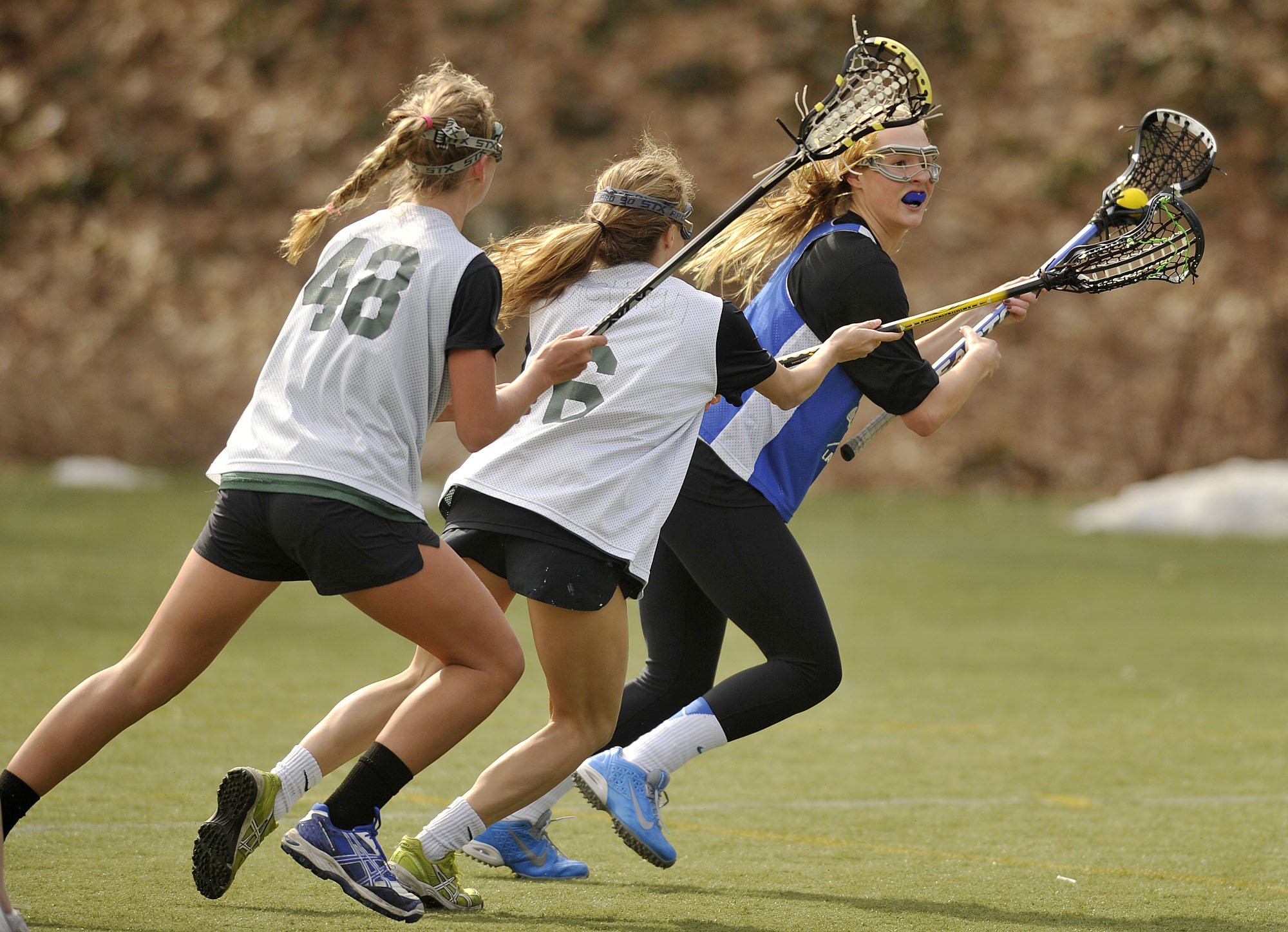
This page provides basic lacrosse coaching tips & instructions. Beyond the ability to teach lacrosse basics (i.e. shooting techniques) to their players, lacrosse coaches need to develop offensive & defensive strategies to meet their style of play and the abilities of their players. Unfortunately, lacrosse coaches often have very limited practice time. Therefore, they must decide how to split their time between team concepts, individual skill work and athletic conditioning.
- Drills – This section looks a wide variety of lacrosse drills that coaches can use to improve individual skills and team fundamentals.
- Clears – Lacrosse coaches will find that they must diligently practice lacrosse clears. Even advanced teams can have trouble with clears against aggressive opponents.
- Face-Off Wing Play – Coaches need to pick aggressive ball hawks for their face-off wing players and practice face-off wing play because it is critical to win a face-off possession.
 Face-off units must also practice how to counter an opponent’s FOGO in case the opposing team is winning a high percentage of the face-offs.
Face-off units must also practice how to counter an opponent’s FOGO in case the opposing team is winning a high percentage of the face-offs. - Fast Breaks & Fast Break Defense – Many lacrosse goals are scored during fast break opportunities. Coaches should practice lacrosse fast break drills in order to maximize this scoring opportunity. Smart lacrosse coaches also work on practicing how to defend fast breaks.
- Man-Down – Strategies to use when your team is down a man due to a penalty on your team.
- Man-Up – Strategies to use when your team is up a man due to a penalty on the opposing team.
- Offensive Formations – This section looks at basic lacrosse offensive formations (i.e. the 2-3-1 formation).
- Slides – Lacrosse coaches will need to teach their defenders how to slide (i.e. cover a teammate who has been burnt by an opponent) in order to have an effective defense. They also need to teach the remaining defenders how to do “two” (second) slides in order to cover the initial sliding defender’s man, etc.

- Zone Defense – Coaches often use a man-to-man defense where defenders stay with their man on defense. However, they also need to know how to use a zone defense where lacrosse defenders stay in a certain “zone” while on defense. Zone defense is often used when defenders are not athletic enough to stay up with their opponents during a game or when they want to confuse an opponent.
Instructional Books for Lacrosse Coaches – These books are perfect for beginning lacrosse coaches as well as lacrosse parents who want to teach more advanced lacrosse concepts to their children.
Instructional Videos for Lacrosse Coaches
Six Drills Every Lacrosse Defensemen MUST Be Doing
Editor’s Note: A former two-sport DI athlete at Fairfield University, Kelly has dedicated his life to building better lacrosse athletes, on and off of the field.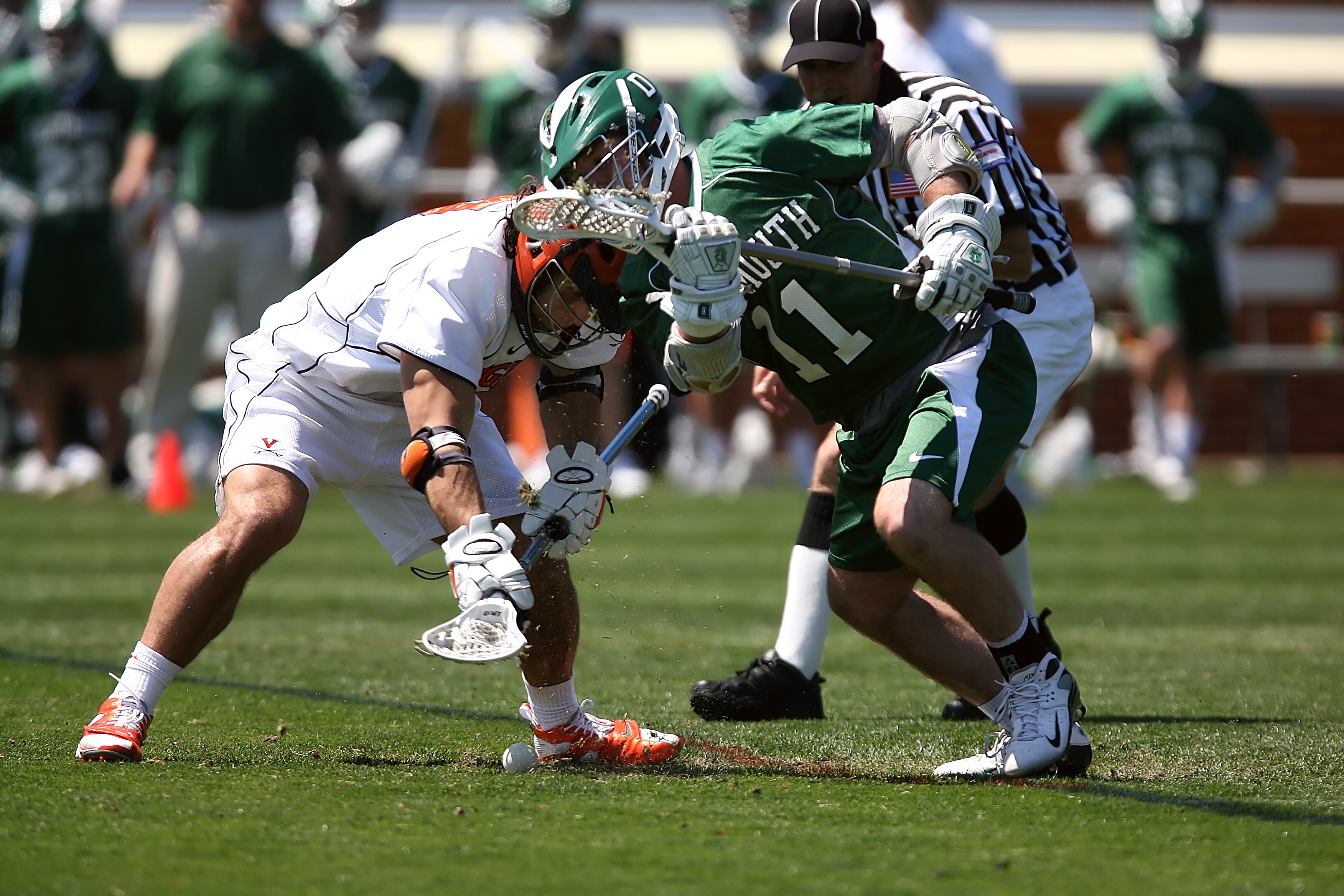 Sean contributes regularly from his state-of-the-art Sports and Mental Preparation Facility in New Jersey. Take it from here, Sean!
Sean contributes regularly from his state-of-the-art Sports and Mental Preparation Facility in New Jersey. Take it from here, Sean!
[mks_separator style=”solid” height=”2″]
Being big and strong as a defenseman certainly helps when playing the game of lacrosse. However the one skill that is mandatory for excellence as lacrosse defensemen is footwork.
Parents often ask me what skills young defensemen should be working on to improve? Just like any other player on the lacrosse field, the higher the lacrosse IQ and the better the defenseman’s stick skills, the easier it will be for them to perform at a high level.
However, when it comes to defense, there is NOTHING that is more important than footwork and positioning.
Ignoring the Obvious
The key to good on ball defense is being able to dictate where the offensive player is going to go. This can only be done well if your footwork and technique are good.
As a coach, I am amazed at how many young players actually ignore this part of playing defense.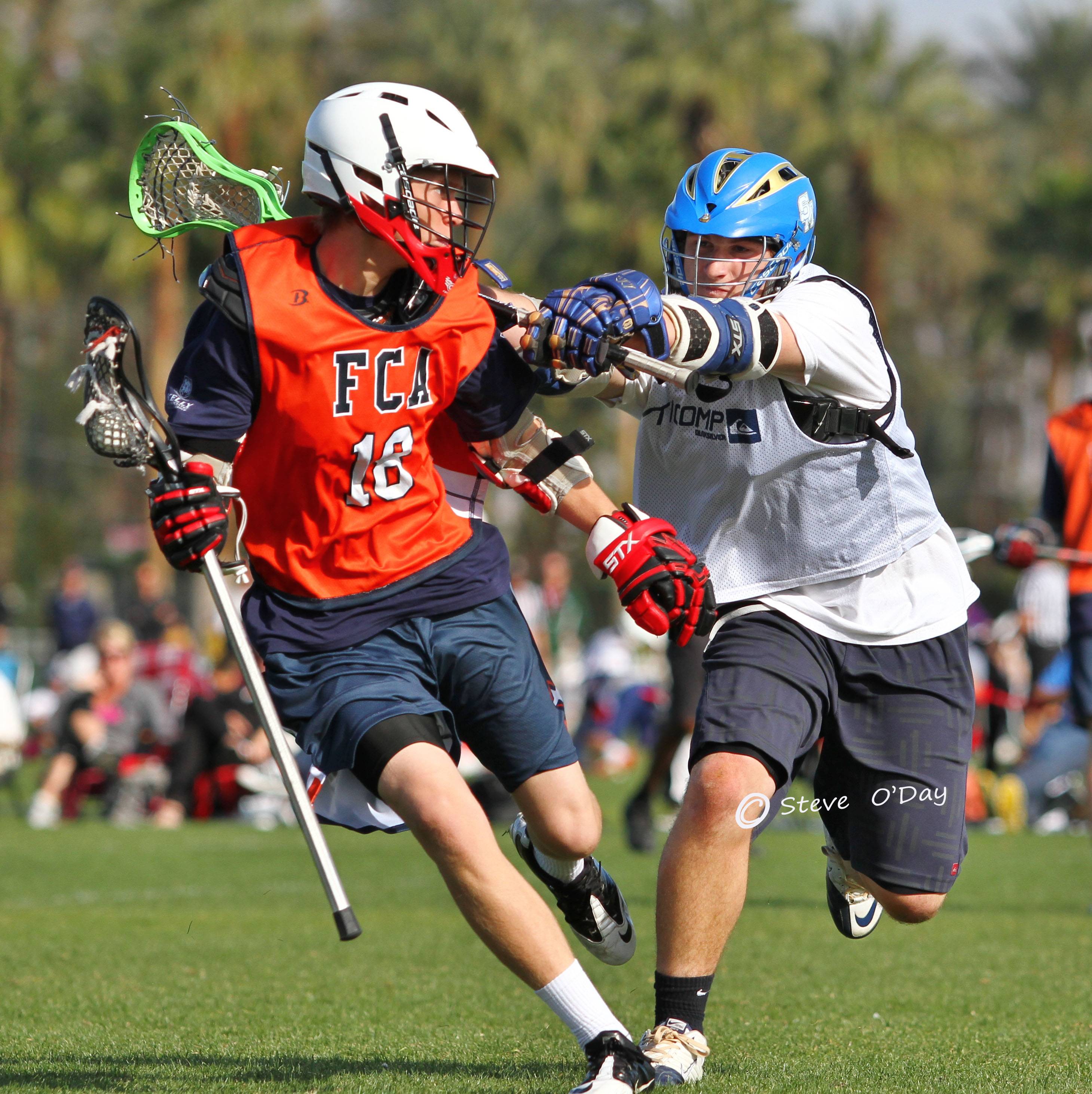 I see a lot of young players who work really hard at getting stronger, play wall ball constantly, and watch lacrosse every chance they get.
I see a lot of young players who work really hard at getting stronger, play wall ball constantly, and watch lacrosse every chance they get.
Those things are all great areas of the game to work on, but nothing should come before trying to perfect your footwork.
Analyzing the Position
When playing defense in lacrosse, you will spend a lot of time in a breakdown position, with your stick out, trying to force your man to a predetermined area of the field. Why would you not practice this?
How can you possibly expect to master the drop step, sideways run, or top side approach if you do not practice it? That would be similar to a wide receiver not practicing his routes? Sounds silly doesn’t it.
You need to understand angles of pursuit and body position to succeed at this position. This is a skill that needs to be practiced, just like everything else.
6 Footwork Drills for Lacrosse Defensemen
Zig Zag 1 on 1
youtube.com/embed/FtkgXxdJoxI?feature=oembed” src=”data:image/gif;base64,R0lGODlhAQABAAAAACH5BAEKAAEALAAAAAABAAEAAAICTAEAOw==”/>
Hawk Drill
Hawk Drill (Sideways Variation)
Drop Step Drill
youtube.com/embed/kNYedeKBRZA?feature=oembed” src=”data:image/gif;base64,R0lGODlhAQABAAAAACH5BAEKAAEALAAAAAABAAEAAAICTAEAOw==”/>
Umbrella Drill
Defensive Stance
Consider adding each of these drills to your workout and be amazed how your footwork will improve. Also try using a weighted stick to improve your muscle memory, endurance and strength!
Also try using a weighted stick to improve your muscle memory, endurance and strength!
I always enjoy hearing your feedback in the comments section below. Ask me any questions and be sure to let me know how your game as a lacrosse defensemen has improved using these drills.
Off-Ball Defense – Lacrosse Tips
Lacrosse Video Tip | Tagged:
Defense
Presented by Brian Lalley, Camp Director
Baldwin Wallace University – Boys Lacrosse Overnight & Day Camp
OFF-BALL DEFENSE
Xcelerate Nike Lacrosse National Program Director, Brian Lalley, discusses Off-Ball Defense:
Most of what we do in lacrosse is without possession of the ball. There are twenty players on the field and one lacrosse ball. As a defender, most of your time will be spent playing off the ball as part of a team defensive scheme. Whatever that defense is there will be one commonality and that is, see your man, see the ball.
There are twenty players on the field and one lacrosse ball. As a defender, most of your time will be spent playing off the ball as part of a team defensive scheme. Whatever that defense is there will be one commonality and that is, see your man, see the ball.
Ball-You-Man Triangle
The first most important step of both seeing your man and seeing the ball is body position. As an off-ball defender, you want to avoid being in a straight line between your man and the ball carrier. This will force you to turn your head completely side to side. If you step off that straight line, you will activate your peripheral vision and create a situation where you can turn your head much less to continually see your man and see the ball.
Head on a Swivel
Seeing your man and seeing the ball must be continuous. We teach offensive players to get to the blind spot of their defender and then cut. Being in a good athletic position to react to quick cuts while constantly seeing the ball and seeing your man is crucial to participating in team defense while maintaining responsibility of your man off the ball.
Stick in the Passing Lanes
It is much easier to keep your stick to your side, which is why a lot of players do it. For the most part, the offensive player two passes away is most open as that defender is generally helping in the crease area. If the offense is able to skip the ball through the defense to that player, he’s generally able to get a very good shot off. As an off-ball defender, we want to take these opportunities for the offense away by keeping our stick in the lane.
Communication
As with anything defensively, communication is key. Know your roles within the defense both on ball and off the ball and communicate that to your teammates. Many defensive coaches are looking for their defenders yell their responsibility with purpose and some anger to try and get the opposing offense to be uncomfortable or intimidated. Performance is rooted in confidence, so if you’re able to rattle an offense by being loud, why not get loud?
Xcelerate Nike Lacrosse Camps
Explore Programs, select a location, and get into lacrosse camp today!
Nike Lacrosse Tip: Girls Offensive/Defensive Hammer Drill
Lacrosse Video Tip
Presented by Brittni Hall, Camp Director
Nike Girls Lacrosse Camp at Berry College
youtube.com/embed/m6V-PHoppHE?autoplay=0&modestbranding=1&rel=0&showinfo=0&origin=https://www.ussportscamps.com/” frameborder=”0″/>
Rationale: Attackers/defenders work on tight space man-up/ man-down scenarios.
Set Up: Place two cones, each on opposite sides, out wide by the 15-meter. Coach is positioned at the top with all the balls facing the goal. Defense/midfielders should be on the right side lined up behind the cone.
Attacker/midfielders should be on the left side lined up behind the cone.
Drill: Attack will always start a man-up.
Have one attacker (x) step out in the 8-meter.
The first person on each line is ready to go. How to start:
Coach starts action by blowing the whistle and throws or rolls a ball to the first attacker on the left line.
 As this happens, the first defender immediately runs out and plays the scenario.
As this happens, the first defender immediately runs out and plays the scenario.It is a 2 v 1 and the play continues until defense (o) gets the ball out of the 12-meter or attack scores.
As soon as ball is dead, those 3 players remain in; the coach immediately rolls or throws another ball out to the attack line.
It is a 3 v 2.
This continues until a 5 v 4.
After attack is man-up for a certain number of sets, defense will start with a player in the 8-meter to have a man-up for the whole set up to 5 v 4.
Points to Focus Upon:
Attack man-up: move the ball quickly; emphasize communication and full attention as the play is unfolding. Work to always be in scoring position; constantly moving feet.
Defense man-down: COMMUNICATE, slide quickly, all defenders should be rotating; one person does not constantly have two players to mark.
Attack man-down: don’t hold onto the ball for too long, quick movements and stay wide.
 Take care not to “creep in” and inadvertently reduce offensive operating room.
Take care not to “creep in” and inadvertently reduce offensive operating room.Defense man-up: double team ball with adjacent defenders tight on players. Constantly communicate and make short slides to double.
I also found this great girls lacrosse drills video by Chris Robinson. He has successfully built McDonough into state and national champions through his innovative “dodge first” offense. His philosophy empathizes dodging to score rather than the more traditional offenses, which emphasize feeders behind the goal looking for cutters. Robinson’s “dodge first” offense will limit your turnovers and increase your time of possession which puts more pressure on the defense and creates more scoring opportunities for your offense.
Check out more lacrosse training tips to help take your game to the next level!
90,000 Let me introduce myself: lacrosse!
Interest in previously little-known sports games often leads to the fact that a new sport in a fairly short time suddenly becomes widespread, massive, even Olympic.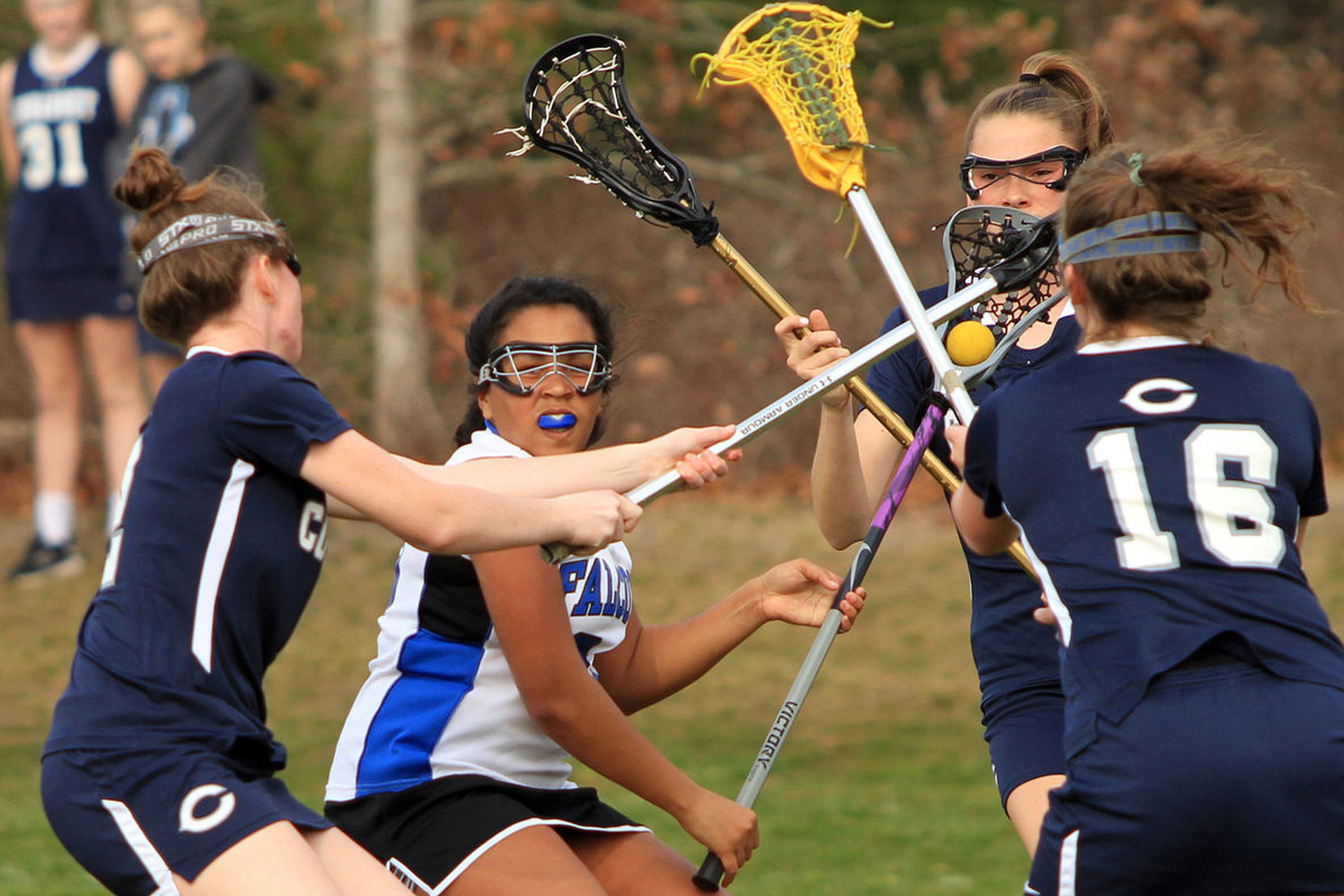 Today, for example, it is no longer necessary to explain to anyone what curling or field hockey is, although a few decades ago this would require leafing through encyclopedias, extracting information from sports literature. The kind of sport that we will try to talk about today is probably also known to very few.Well, the more interesting it will probably be to get to know him better. Get to know – and, possibly, make your choice.
Today, for example, it is no longer necessary to explain to anyone what curling or field hockey is, although a few decades ago this would require leafing through encyclopedias, extracting information from sports literature. The kind of sport that we will try to talk about today is probably also known to very few.Well, the more interesting it will probably be to get to know him better. Get to know – and, possibly, make your choice.
A game for real Indians
Lacrosse (“la crosse”) – literally translated from French means “hockey stick”. They claim that this game was invented by the American Indians – ball matches were used for the physical training of warriors. And also – for bloodless, sporting and peaceful resolution of conflicts that arose between tribes. Archaeological findings suggest that lacrosse originated in the first half of the 15th century on the territory of modern Canada.The first European settlers met her in the 17th century, and in the 19th century the beloved sports game spread quite widely among the inhabitants of the French colony of Canada, who christened it in the French way.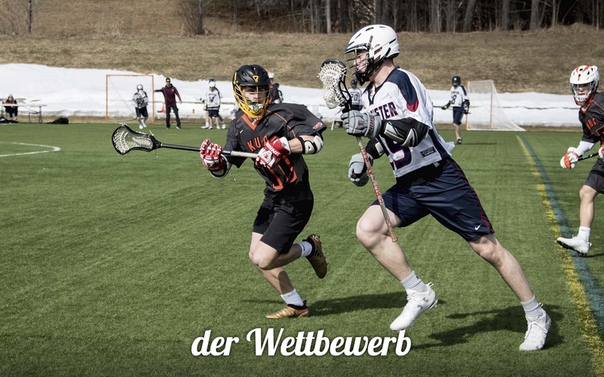 The first official game of lacrosse took place in 1867, so this sport, due to its historical roots, is quite capable of competing with football. By the way, another interesting fact, also related to the preservation of the historical roots of this ancient game. In addition to the national lacrosse association in America, today there is a team in which representatives of the Iroquois and other Indian tribes play.
The first official game of lacrosse took place in 1867, so this sport, due to its historical roots, is quite capable of competing with football. By the way, another interesting fact, also related to the preservation of the historical roots of this ancient game. In addition to the national lacrosse association in America, today there is a team in which representatives of the Iroquois and other Indian tribes play.
RULES
Lacrosse is a contact sports game between two teams. The goal is to shoot the ball into the opponent’s goal using a stick called a stick.
There are four player positions in lacrosse: midfielders, forwards, defenders, and goalkeeper. Midfielders can be in any part of the field and play both in defense and attack. The task of the defense is to prevent the scoring of their goal and get the ball using a stick-stick, using contact wrestling or a correctly chosen position on the field.The goalkeeper is the last line of defense.
The game is divided into several types, due to the location of the competition.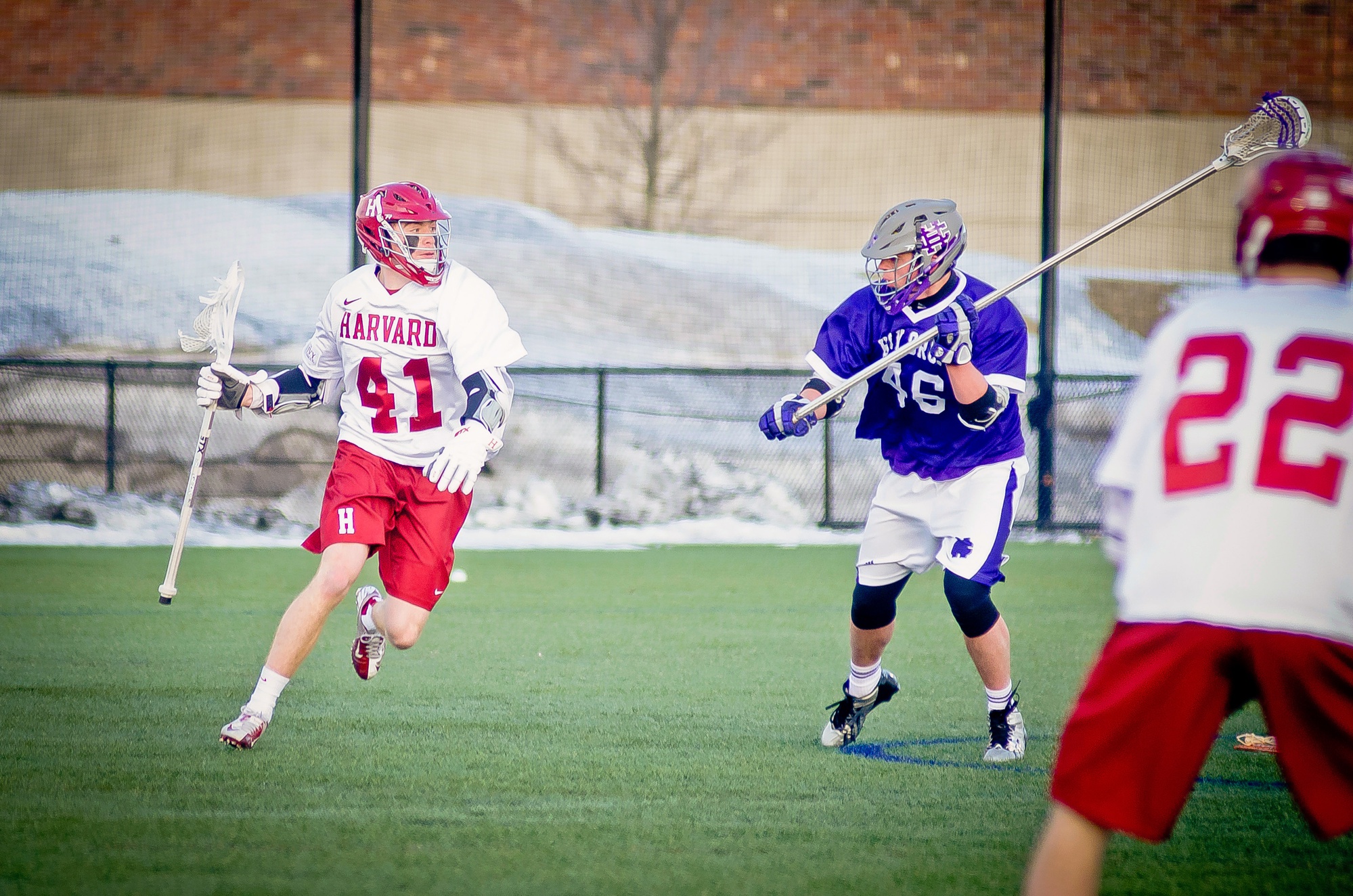
Lacrosse on the grass field is a classic type of game in which two teams of ten take part.
Mini-lacrosse (lacrosse in a box) – the game takes place indoors, teams of six compete in it.
Depending on the composition of the teams, there are:
– men’s lacrosse. Four periods of 15 minutes each. The playing field measures 100 x 55 meters with a gate 1.8 meters wide.The gates are located at a distance of 72 meters from each other;
– women’s lacrosse. A game of two periods of 25 minutes each. The size of the field and the width of the goal are usually the same as in the men’s version of the game, but the distance between the goals is already 92 meters.
EQUIPMENT
Rubber ball. The main playable projectile in lacrosse. Its dimensions are 62.8-64.77 mm, weight is 140-146 grams.
Stick – a special design stick, which is a symbiosis of a racket and a net.Players use three types of sticks that differ in the length of the handle. Midfielders and strikers are armed with short sticks, defenders are armed with elongated ones. The goalkeeper’s weapon is a stick with a larger net-net.
Midfielders and strikers are armed with short sticks, defenders are armed with elongated ones. The goalkeeper’s weapon is a stick with a larger net-net.
Protective helmet. A mandatory attribute of a player that reliably protects the head and face from injury.
Leggings. Designed to protect hands from impact.
Elbow and knee pads. Means that protect the player during contact wrestling, falls. To protect against possible injury, players are also allowed to use additional, usually hockey, body protection.
REPEAT ROAD TO OLYMPUS
In its long history, this game has managed to climb to Olympus. Olympic medals in lacrosse, however, were played only twice, in 1904 and 1908. Both gold sets then went, of course, to the Canadians. Later, lacrosse was deleted from the Olympic program, although it appeared on the Olympic fields three more times, but already as demonstration performances. The annual World Lacrosse Championships, held for nearly thirty years, give hope that the game’s ascent to Olympus may well be repeated.
Today there are more than three dozen national lacrosse federations in the world. Most of them are located in Europe and were created in the last decade of the 20th century, but the United States and Eastern Canada remain the leading countries, where lacrosse is very popular. In Canada, for example, it has already become a national – the main summer sport. Lacrosse is well known to the British and Australians. Associations of this sport have been established in Japan, South Korea, New Zealand. Lacrosse is appreciated in China and India.In Russia, it has not yet been recognized as an official sport, but the creation of a lacrosse federation, as the Russian initiators and enthusiasts of its promotion assure, is the prospect of the very near future.
At the moment there are only two full-fledged teams in Russia, in Moscow and St. Petersburg, playing the “Cup of Capitals” lacrosse among themselves. In Moscow, a student team has appeared, created on the basis of the Peoples’ Friendship University of Russia. The team is also being formed in Yaroslavl. Let’s hope that this list will soon be replenished with another one formed by enthusiasts here in Krasnoyarsk.The guys spend their trainings on weekends in Tatyshev Park, inviting everyone to join these classes.
COMMENT
Andrey Istomin , captain of the emerging Krasnoyarsk lacrosse team:
– It is impossible not to fall in love with lacrosse, if only because it is the most dynamic, fastest team game. In addition, it is accessible to a person of almost any age: in our team, both 35-year-olds and eighth-graders have successfully mastered it.Lacrosse is available for both boys and girls.
We spend our Saturday and Sunday trainings on the hockey rink of Tatyshev Island: I am sure that anyone who has ever been to the island will find it without difficulty. One more thing that I would like to inform those who have shown a desire to study: they will not have to spend money on the purchase of equipment, equipment – we are able to supply everyone with everything they need.
It doesn’t matter what your physical form is, the main thing is required from you – the desire to play this exciting game.I will add that due to the lack of competition in this sport in our country, everyone has a chance to get to the Russian championship, and having shown himself at it – to be part of the national team.
Those interested in this offer can contact me directly – 8-933-200-27-90. I will wait for calls!
Dutch Lacrosse Association – gaz.wiki
The Netherlands competed in the second European Lacrosse Championship in 2008 in Lahti, Finland. They set a 6: 2 record in the tournament, taking 2nd place after defending the European champions, England.The team surprised the lacrosse world by defeating traditional European lacrosse powers such as Sweden, Ireland and Germany before appearing in the game for the gold medal. The success of the Dutch campaign has been featured in major lacrosse publications and has placed the Netherlands on the lacrosse map for the first time in history.
The Dutch team played in Division C, which included Austria, Denmark, France, Scotland and Sweden. They set a 4-1 round-robin record, winning a three-way draw with Sweden and Scotland and scoring 76/25 goals for / against.The goal difference determined that Sweden finished first and the Netherlands took second place in the group. The Dutch team beat Ireland and Germany in a knockout match and then lost to the longtime champions of England in the championship final.
Many people attribute the team’s success in Finland to two weeks of isolation and training in Den Helder before the tournament.
Game Results
The Netherlands opened the tournament with a convincing victory over Austria, beating Sweden the next day in a tense match with 1 goal.They then beat Denmark before losing the controversial game with one goal to Scotland. The team ended the group game with a one-sided victory over newcomer France.
The second place in Group C took the Dutch team to the playoffs of the tournament. They beat Ireland in a tight fight with one goal in the quarterfinals before throwing the Germans into a convincing 12-6 semi-final win.
The Dutch team played 8 games in 10 days at various venues throughout Lahti, Finland.The detailed results of the game are shown below.
| Date | Enemy | Account |
|---|---|---|
| August 7, 2008 Thursday | Austria | W, 25-4 |
| Friday, August 8, 2008 | Sweden | W, 8-7 |
| Saturday, August 9, 2008 | Denmark | W, 17-5 |
| August 10, 2008 Sunday | Scotland | L, 6-7 |
| August 11, 2008, Monday | France | W, 20-1 |
| 12 August 2008 Tuesday | Ireland | W, 11-10 |
| August 14, 2008 Thursday | Germany | W, 12-6 |
| Saturday, August 16, 2008 | England | L, 4-14 |
Team organization
Longtime lacrosse businessman John Bergsma was at the helm of the men’s national program.John’s rich experience in the National Lacrosse League and the Canadian national team was supported by coaches from North America and the United Kingdom. Travis Taylor, a native of New Westminster, British Columbia and head coach of the University of Bristol, was appointed head coach, while McGregor Stockdale (former Brown University defender), Nigel Greenall (head coach of Ashton’s lacrosse in Northern England), and Richard Bose ( Groningen Lacrosse, Netherlands) were hired by assistant coaches.
The team has formed new sponsors for the European campaign, ditching previous partnerships with Riddell and STX.Team helmets were provided by New York Cascade Sports and all equipment and clothing were provided by Michigan Warrior Sports foundations.
Preparing for the tournament
The Dutch team concentrated in the Netherlands two weeks before the European Championship, taking all players to Den Helder (in the north of the Netherlands) for an intense 14-day training session.
NLB has formed a strategic partnership with the Royal Netherlands Navy, using its extensive facilities at Den Helder as a preparation site for the Finnish campaign.In addition to grueling three days of training, the Dutch team took part in several naval exercises, followed a strict diet and remained in the barracks at the base.
For the press, one training session was scheduled on the off-base field. On July 27th, friends, family and the general public came to watch the team train on a hot sunny day in downtown Den Helder.
The Netherlands competed in their first World Lacrosse Championships in 2006 in London, Ontario, Canada.Led by a detachment of Dutch emigrants from North America. These players included many former professional players (NLL) (WLA), Jonas Derckx (NLL 1998-2008) supported the Dutch attack, Aaron Vanderhorst (WLA 2000-2015) was featured in midfield, Vanderhorst is on his way to every World Cup since 2006. He will wear the Dutch orange at the 2019 World Indoor Championships. Well, former UWO Mustang outstanding player Andrew Dowdell (Major series 2000, NLL 2001) blocked the position with a goalkeeper and was also considered a player to be watched throughout the game according to the official program.Daudell had a shortened NLL and Major career due to head injuries. Despite his past head injuries, Dowdell was a solid stone in a cage for the Dutch. The Dutch national team finished the tournament with a record 3-4. They also made ILF history by becoming the first team to win their debut match in their first World Cup (beating South Korea 12-4).
The Netherlands competed in the Orange Group, including Germany, the Czech Republic, New Zealand and South Korea. Competing against these countries in a round robin game, the Dutch group set a 2-2 record, convincingly defeating both South Korea and New Zealand.The Netherlands then beat Latvia (10-4) and then lost to Finland in a tense and controversial game with two goals (final score: 8-10). In the last match, the group lost to the talented Scottish national team, but finished the tournament in 12th place (out of 21 countries).
Game Results
The Netherlands played 7 games in 8 days, all at North London Athletic Fields. The results of the game are listed below.
| Date | Enemy | Account |
|---|---|---|
| July 14, 2006, Friday | South Korea | W, 12-4 |
| Sunday July 16, 2006 | Germany | L, 9-15 |
| July 17, 2006 Monday | New Zealand | W, 15-4 |
| Tuesday July 18, 2006 | Czech Republic | L, 9-19 |
| Wednesday 19 July 2006 | Latvia | W, 10-4 |
| July 20, 2006, Thursday | Finland | L, 10-8 |
| Friday 21 July 2006 | Scotland | L, 3-15 |
Team organization
The staff, led by General Manager Cornelius Derks, consisted entirely of North American coaches during the 2006 tournament. Roots, a native of Oshawa, Ontario, held managerial responsibilities while David Leich (head coach of the University of Western Ontario Mustangs), Jason Crosby (NLL Buffalo Bandits outstanding) and Jim Huellscamp (formerly Salisbury State University All-American) acted as an assistant coach.
Waterford Development (developer based in Washington DC) was the main sponsor of the team and exclusive partnerships were formed with several suppliers of lacrosse equipment and apparel. STX (based in Baltimore, Maryland) provided the team with equipment and Riddell provided the team with helmets. Atlantic Sportswear supplied clothing for the Netherlands and the team wore their famous orange colors.
90,000 Boxing is always with you! Train your coordination and hitting speed with Fight Ball.
Hello dear readers of the Burya Shop blog! Today we would like to tell you about one ergonomic, convenient and simple thing that every athlete should have in stock, namely fight ball. There is a lot of potential hidden in just one small and simple machine!
In many types of martial arts (boxing, Muay Thai, kickboxing, ARB, etc.), you need to have a well-delivered blow, which will combine power and speed. To develop these skills, there are many techniques, simulators.One of the most inexpensive and convenient is the ball with an elastic band!
What is Fightball?
As mentioned above, a fight ball is a ball tied to a band with an elastic band. The balls are made from various components, which allows you to choose exactly what will be perfect for you!
The band is put on the head (more precisely on the forehead) of the athlete. Adjusting the length of the elastic is easy! The ideal length for hitting practice to begin with is from the forehead to the navel (the shorter the elastic, the harder it is).It is also better to start with light blows, because it will not be very pleasant to get in the eye from yourself.
Many people call the main advantage of this simulator its compactness. You can easily put it in your pocket and go to workout in the gym, on the street, in nature!
What develops and how to train with it?
When working with a fightball, you “pump” a lot of characteristics:
- Speed of reaction and reduction of time to strike;
- Shot coordination;
- Improves the accuracy of the ball attacks, which will help to hit the enemy where you aim;
- There is a sense of distance and understanding of body work during an attack.
How can you get all this with a regular ball with an elastic band? Now we will tell you the training process itself!
So, the training process itself:
- It is necessary to set the ball in motion. Here you can do as you like. Either slightly throw it away from you and start hitting the ball, or lower your head so that the ball hangs calmly and start striking it so as to gradually transfer its flight path from vertical to horizontal;
- We continue to hit the ball so that the ball does not reach our face and does not fall down.For better and faster results, it is better to train every day for 15-20 minutes;
- After a short rest, put the belt back on your head and begin to gradually gain power and speed of impact. You need to keep the ball at your eye level. You can practice your favorite combinations, practice jabs;
- We train strikes and defense. It is necessary to place after each attack of your hands near the chin, as required by competent and correct defense during the fight.Do not forget that the elbows must protect the body;
- Next, replace the defense with movement. It is necessary to constantly maintain the speed of the blows and move around the room. So you can hone your coordination and sense of the body in space;
- We transfer our vision to the objects around us: to people in the gym, to TV, to whatever. In this way, we develop the concentration of peripheral vision.
To better visualize how you need to train, you can watch the video about Fight Ball:
/
What is the use of a hit trainer?
To begin with, it should be noted the advantages of fighting against the background of other percussion trainers:
- Safe for the athlete;
- Small size allows you to carry it wherever you like;
- Workout is varied and never gets boring.
The following are the benefits that you will receive during the training process:
A lot of calories are expended, which allows you to lose weight and get the body in shape;
Constant training keeps the body in good shape, which allows you to feel vigorous and not get tired for a long time;
Endurance is improved;
An ideal opportunity to throw out your negative energy accumulated throughout the day.
In our online store you can buy fightballs at good prices! We can be sure about the exercise machines for practicing strikes, we guarantee the quality and durability of use!
Train with us! Go in for sports and be always in good shape! Burya Shop is the main assistant in everything related to sports!
Back to the list of publications
Lacrosse in Kiev.Catalogs, information and tools • SportGuide
Lacrosse is a national Canadian sport. This is a team game: 22 people on each side (although there are several varieties of lacrosse, differing in field size, number of players and rules) run at the ready with “nets” that look like a cross between a club and a racket. The goal is to throw a rubber ball into the opponent’s goal. The game was invented by Indian tribes, who, with its help, trained warriors and resolved conflicts, sometimes even military ones.
The first French settlers liked the game so much that they immediately named it “la crosse”. lacrosse, because the shape of the clubs reminded them of a bishop’s staff. Until 1930, the rules were the same for both the female and male versions. Now only men can beat each other with clubs. Women are not allowed to fight, they play without a helmet or protection. Lacrosse was included in the Olympic Games three times. In general, it is considered an “elite” sport. It is played by pupils of private schools in England and students of prestigious US universities.
Lacrosse is in great demand today and is growing in popularity around the world. A unique combination of speed, skill, agility, grace, endurance, agility, makes Lacrosse the best of all possible field games. If you are interested in lacrosse trainings in Kiev – select the “Trainings” tab at the top of the page. It provides full information about classes in schools, sections and lacrosse clubs in Kiev.
In the same place, on other tabs, you will find: shops equipment, repair shops , rental points , etc.; premises, grounds and halls , rented for lacrosse practice; competitions and announcements of thematic events in Kiev; organizational instruments ; thematic information and references .
Lacrosse in Kiev. Schools and sections
Looking for lacrosse training in Kiev? At your service is a complete list of the capital’s coaches, sections and clubs where this team sport is taught.In it you will find classes for both children and adults; both in groups and individually; both on the Right Bank and on the Left. For convenience, use the catalog search or the appropriate filters.
Lacrosse in Kiev. Goods and services
Looking for where to buy equipment or equipment for lacrosse in Kiev? Where to repair or rent equipment for this sport? Perhaps you need organizers or producers? At your service is a list of metropolitan companies that provide goods and services in the field of lacrosse.For convenience, use the catalog search or the appropriate filters.
Errea is sports equipment that combines stylish, comfortable and technological materials that are ideal for supporting athletes of all sports and all levels. Address in Kiev: s. Svyatopetrovskoe | District: | |
| “Errea Ukraine” | ||
Sports pharmacy MedSport – bathe sports and functional food with a vigode! Nearest metro: University, Ploshcha Lva Tolstoy | District: | |
| “MedSport” | ||
The Swedish company HAGS produces mobile sports playgrounds, playgrounds, play surfaces, children’s sports complexes, equipment for sports and fitness aydor.Our products are distinguished by their reliability and high quality. Park equipment and playgrounds specially developed by specialists and designers will easily fit into the surroundings and will delight visitors. Nearest metro: Chernigovskaya | District: | |
| HAGS | ||
Lacrosse in Kiev.Rent of fields and grounds
Looking for a lacrosse course in Kiev? Or do you want to find a competition site? At your service is a list of properties that can be rented for various lacrosse events. For convenience, use the catalog search or the appropriate filters.
The Avangard Sports Complex provides a gymnasium for hourly rent (equipped with the most popular gymnastic apparatus – rings, parallel bars, horizontal bars, etc.).including a trampoline), gyms for playing basketball, volleyball, mini football, tennis or use for other types of sports training. 2 parking lots, changing rooms with shower and sanitary facilities. knot. Nearest metro: Dorogozhychi | District: | |
| SC “Avangard” | ||
On the basis of the complex, there is a stadium with two football fields, three tennis courts, a swimming pool, sports grounds, gyms, game rooms, an aerobics hall, a boxing hall, and a martial arts hall.Under the guidance of leading coaches, there are sections for such sports as: swimming, boxing, football, badminton, athletics, athletic gymnastics, basketball, volleyball, sports aerobics, rugby, aikido, pilates, table tennis, rollerball sports. Nearest metro: Beresteyskaya, Shulyavskaya | District: | |
| FSK “Economist” | ||
Kiev lacrosse announcements
Interested in spending your free time attending a lacrosse competition? Or find out about useful promotions in Kiev shops and clubs? Here are the announcements of events and events taking place in Kiev in the field of lacrosse: competitions, tournaments, promotions, presentations, master classes, etc.
16/02 Recruitment to the “Kiev Lacrosse Club”
Kiev Lacrosse Club is looking for players of any level
Cooperation with the Turkish team
If there are Ukrainian teams wishing to develop the direction of lacrosse at the level of international competitions – please contact
Lacrosse competition in Kiev
Do you want to try yourself at a new level and take part in lacrosse competitions in Kiev? This section contains information about regular championships, championships, tournaments and leagues of the capital, both professional and amateur.For children and adults. Also here you will find the calendars of competitions of the All-Ukrainian and Kiev Lacrosse Federations.
Articles about lacrosse
Lacrosse – the younger brother of war
The title of the official national sport of Canada is not only hockey, as one might expect, but also lacrosse – an exciting ancient game of North American Indians
Lacrosse and Baggataway
The modern American game lacrosse, or, as they called its Cherokee Indians, who lived in the Midwest of the United States, baggataway
7 interesting facts about Lacrosse
Like football initially, Lacrosse did not have any special rules and several hundred residents of the settlements played in teams.The field could have dimensions of one hundred meters and a kilometer or even 2 kilometers. The game could last for two or three days
section search
- About
- Cooperation
- Contacts
- Add info
- Reviews
- Statistics
- Other
90,000 About lacrosse for the uninitiated?? | invme
North American Indians have played lacrosse since the 11th century – this is how they resolved military conflicts.Then they competed for several days, and the playing field occupied up to several square kilometers. Now lacrosse is called “the fastest game on two legs.” Well, if you are interested in unusual sports, read our material on Japanese training “Tabata” .
North American Indians have played lacrosse since the 11th century - this is how they resolved military conflicts
What are we talking about?
Fast and brutal attacks replace each other, it takes a few seconds for a goal, the ball is constantly moving.The player must hit this ball into the opponent’s goal, throwing it with a pole with a net at the end – a stick.
There are two varieties of lacrosse – on the grass and in the box. Two teams of 10 people play on the grass, 110×55 meters on the field. “Box” is the territory of a hockey rink. Since it is smaller than the field “on the grass”, in this variation the teams play 6 by 6.
Do they play here?
Lacrosse used to be an exclusively North American sport, now it is gaining popularity all over the planet.In Russia today there are 3 lacrosse teams – Moscow Lacrosse Club (Moscow), St. Petersburg White Knights (St. Petersburg), Golden Ring Warriors (Yaroslavl).
Who is on the team?
There are four positions in the game: midfielder, attacker, defender, goalkeeper. The attackers only attack (except for the “ride” situation, when the defense kicks the ball out and the attackers interfere with them), the defenders only defend (except for the “clear” situation, when they kick the ball out), the goalkeeper defends the goal, the midfielders play in any part of the field, as in defense and in attack.
What do you need to play?
Play with two types of sticks – attacking sticks up to 110 cm long, and defensive sticks up to 180 cm long. In addition to them, you need protective equipment – shoulder protection, gloves and a helmet.
Why go there?
If the Americans popularize lacrosse so much that it becomes an Olympic sport, then the stubborn amateur has a chance to get into the first Russian Olympic lacrosse team. After all, there are very few players so far. It’s also fun.
Where to start training?
Order sticks and balls from the States. Unpack the package, throw the ball against the wall and catch it with the stick. This is how both beginners and professionals train, and the latter bang the ball on bricks or concrete for 3-4 hours in a row. How to properly handle the ball is best watched on YouTube.
When catching is more or less successful, learn to run properly. To prevent the ball from jumping out of the net while running, swing the stick from side to side on the move – centrifugal force will prevent the ball from leaving the net.Hold the handle with one or both hands. Stick-wielding interval running is a good way to practice this skill.
What about group training?
When you find at least three more who want to play, watch basketball together and disassemble the tactics and combinations that you see. Everything is similar there, but it’s easier to figure it out – much fewer people are running around the site at the same time. For example, both there and there are picken rolls, zone and personal defense, positional and gradual attack.After watching, go and work out the schemes. By the way, if you still do not know when to practice – in the morning or in the evening, read our material about it.
At first, try not to push and do not allow to push you – first you need to develop playing skills. And to do this, if you constantly fall, is not easy. And don’t forget to drink! It is very important to do this during any sport activity.
Women’s League
Women can make the history of this sport if they create their own team.This is because there are no women’s lacrosse teams in Russia yet, and few enthusiasts train and play with men.
Team play is always drive, and lacrosse is drive squared. If you are looking for something really fast-paced then this game is for you.
Moscow coach is ready to contribute to the development of the lacrosse team in Vologda
Coach of one of the country’s oldest lacrosse teams “ Moscow lacrosse club ” Valentin Sosnov expressed his readiness to come to Vologda and teach the local team the basics of this sport.
Lacrosse is a contact American team ball and stick game. In Russia, the mention of lacrosse is rare: you can count the teams professionally playing this game on one hand – one male team in Moscow
and St. Petersburg. And it is important for the Lacrosse Federation in Russia to promote this sport: its representatives regularly travel to other cities with all the equipment, their own gates and teach new lacrosse teams for free.
Master classes have already been held in Yaroslavl, Perm, St. Petersburg, Zhukovsky and other cities.The mentor of the Moscow lacrosse club team and a member of the Council of the Russian Lacrosse Federation Valentin Sosnov told the Vologda.RF correspondent that after such master classes, the coaches follow the further development of new teams, help them, invite them to competitions that are mostly held Abroad. For example, the next championship will be held in Serbia.
At such master classes, athletes are taught how to use a stick, handle the ball, and make passes. Usually mentors, often Valentin Sosnov himself and Yevgeny Arkhipov, president of the Lacrosse Federation in Russia, come for 1-2 days off.Classes can be periodic: for example, if the training process requires it, mentors will come once a month.
Valentin Sosnov expressed his readiness to come to our city, if we recruit a team of initiative young people (the team can be women, men, children) interested in the development of lacrosse in Vologda. You can start training with a team of 4 people from the age of six. For classes, a gym or field and equipment are required: at the initial stages, only a ball and a club.
“We will come and show everything. We will bring equipment, but we will not be able to leave it. The International Lacrosse Federation sent us a huge number of clubs and balls, but they are now stuck in Latvia due to the coronavirus pandemic, and until the borders are opened, we will not be able to take all of this. But if by the time the inventory is at our disposal, there are interested persons in Vologda, we will be able to send them, for example, 10 clubs and balls, ”says Valentin Sosnov.
The trainer notes that the beginning of classes does not require a high level of physical fitness, but it develops the back muscle corset well. The Vologda City Administration notes that the development of lacrosse in the regional capital can have a positive effect on the level of involvement of Vologda residents in sports.
“To form a lacrosse team in Vologda – and initiative is interesting anyway. And any new or, more precisely, not very popular sports, at least deserve to be presented to the residents of our city.The main thing is that according to the results there are like-minded people who are ready to contribute to the development of lacrosse or another sport in our city. On the other hand, Russian President Vladimir Putin set a task: by 2024, 55% of the country’s residents should go in for sports. The more opportunities Vologda residents have for doing sports, the better , ”commented Dmitry Zhobakas, Head of the Department of Physical Culture and Mass Sports of Vologda.
We will add that representatives of the Russian Lacrosse Federation come to Vologda with a master class, the initiative group needs to gather a team of those who wish, find a gym or other training ground and write about this to Valentina Sosnov on the social network.
Senior Lacrosse Player Career Profile Ben Rosenberg Essay
Senior lacrosse player Ben Rosenberg has been a reliable scorer and varsity team leader since his sophomore year. During his school career, he scored twenty-three goals and received over seventeen assists, mainly playing in midfield and attacking. With a calling to serve and talent on the field next year, he will find him in Connecticut, where he plays lacrosse for the Coast Guard Academy.
During the summer and fall, Rosenberg played for the Maryland Xtreme Lacrosse, an elite club team that competes in major events across the Bay Area. “Ben worked really hard during the offseason,” commented university lacrosse coach Stephen Poohl, who also coached Rosenberg on the Xtreme team. “As a player, Ben stands out for his ability to score goals and he is usually one of the first to arrive and the last to leave training.”
“I try to put all my energy and time into lifting, training, hitting the wall and training,” Rosenberg said.”I like to think I’m leaving RM as a light legend.” As captain, he helps young players and supports the team when it comes to additional training, coaching and morale boost. “Ben is a great captain,” said varsity player and junior Ben Fishman. “He walks, he puts in double the work, and you can see it on the field.”
Rosenberg frequently assists Coach Poole in various clinics and middle school programs, contacting the cluster’s four elementary schools and Julius West High School.“Ben was a big supporter of the program, helping young players,” said Coach Poole. Through coaching in clinics and hiring high school players, their work has resulted in significant differences in the current freshman class. “Coach Poole is definitely improving the program. I work closely with him to try and improve our lacrosse team, ”said Rosenberg. “We’re pretty close, me and Chubby.”
With additional training, coaching and the Xtreme team, he was admitted in November to the Coast Guard Academy, the smallest of five military schools with nine hundred students and eight majors.Consequently, the Academy is extremely selective, including aptitude test and recommendations from local politicians as part of the recruitment process. “Once you enter a service academy, it’s hard to get into in the first place,” commented Rosenberg. “I’m honored to have the chance to get a free education and play lacrosse for another four years. This is a great deal. ”
“You are undergoing military training,” he added. “You are focused on that and getting good grades. This is a very professional environment. “Despite the limited specialization, each student is guaranteed five years of employment after graduation. There are a number of specific career options, from technician to shooter and damage control. Rosenberg hopes to get one of the more specialized positions: a position in TACLET or tactical law enforcement teams.
Compared to Navy SEALs, TACLETs are special operations whose primary mission is to protect the US maritime border, conduct maritime law enforcement, and intercept enemy forces and assets.“I knew I wanted to be in the army from childhood,” Rosenberg said. “I have always had a calling to serve.”
Acquiring a TACLET-related position will require hard work and leadership that has already been demonstrated throughout his lacrosse career.

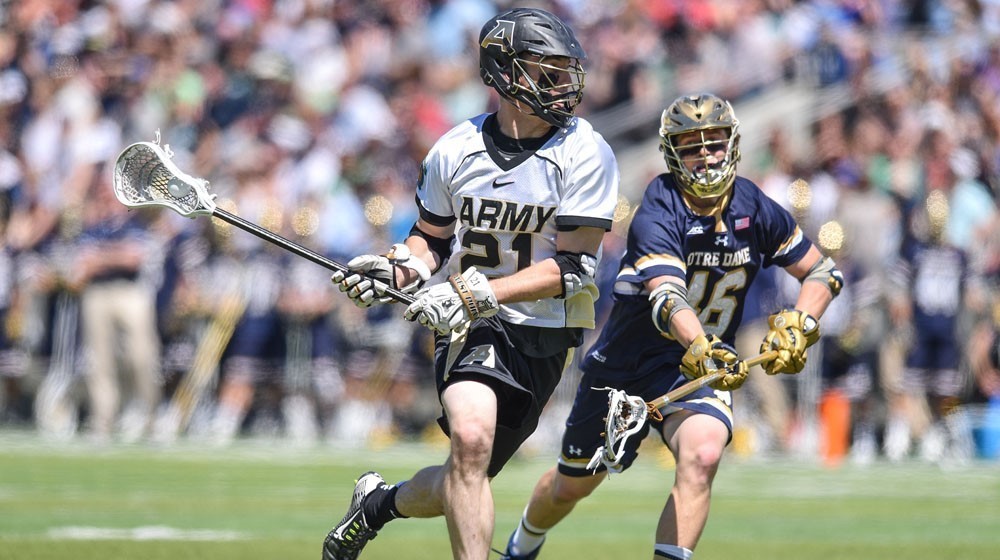 They do not gamble for a takeaway. Instead, they force their opponent to pass because they can not get open.
They do not gamble for a takeaway. Instead, they force their opponent to pass because they can not get open.
 Face-off units must also practice how to counter an opponent’s FOGO in case the opposing team is winning a high percentage of the face-offs.
Face-off units must also practice how to counter an opponent’s FOGO in case the opposing team is winning a high percentage of the face-offs.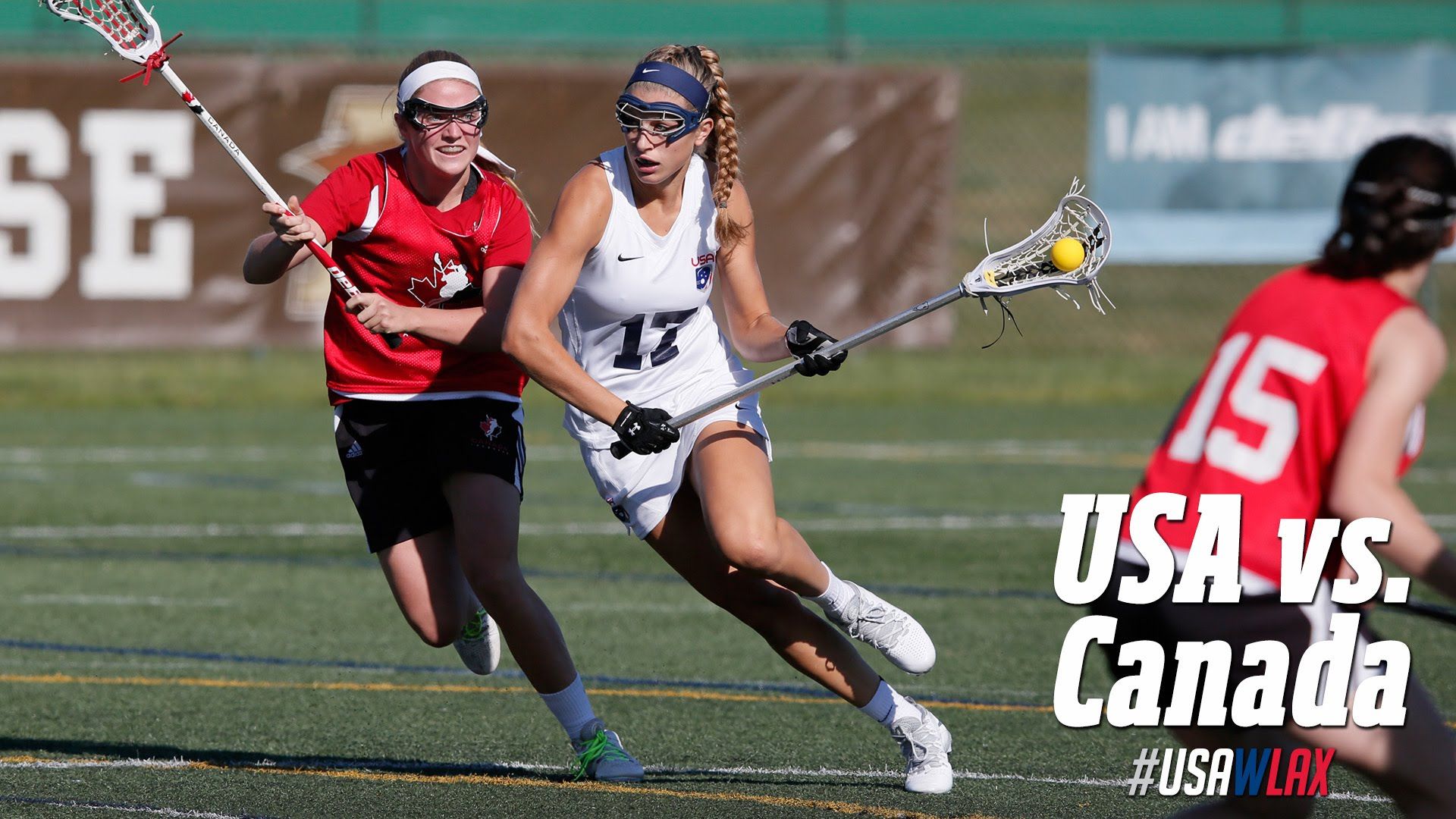
 As this happens, the first defender immediately runs out and plays the scenario.
As this happens, the first defender immediately runs out and plays the scenario. Take care not to “creep in” and inadvertently reduce offensive operating room.
Take care not to “creep in” and inadvertently reduce offensive operating room.